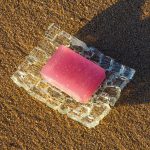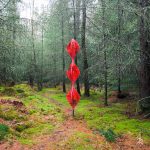A Centerpiece To Dream of; The Oceania Series
The Vermeer series is a succession of curved relief panels. Their reflective glass surfaces refract the room or the environment so that the viewer’s perception switches between the image and the reflection. Each piece starts as a painting on glass with enamels, which is then fired to fix the pigments into the glass. The glass is then cut and collaged to create a faceted, pixilated image. The shape of each Vermeer is a shallow, tensioned curve, like the lens of the eye. I started creating these works in 2017 and they are the perfect structure for Oceania.
The Oceania series is a group of Vermeer works that reflect a trip to Tokyo and to Auckland early in 2020. Most have a relationship to water – either a beach, a lake, or the ocean – and to the natural and spiritual world. As Covid-19 was taking hold and the virus spread, they served to emphasise the value of the fiercely protected, unspoiled natural beauty of New Zealand and the restraint, focus, and social consciousness of Japanese society at a time when the whole world is looking closely at itself and revaluating.
Medium: Enamelled glass, timber
Oceania: Vermeer 48 Happo-en
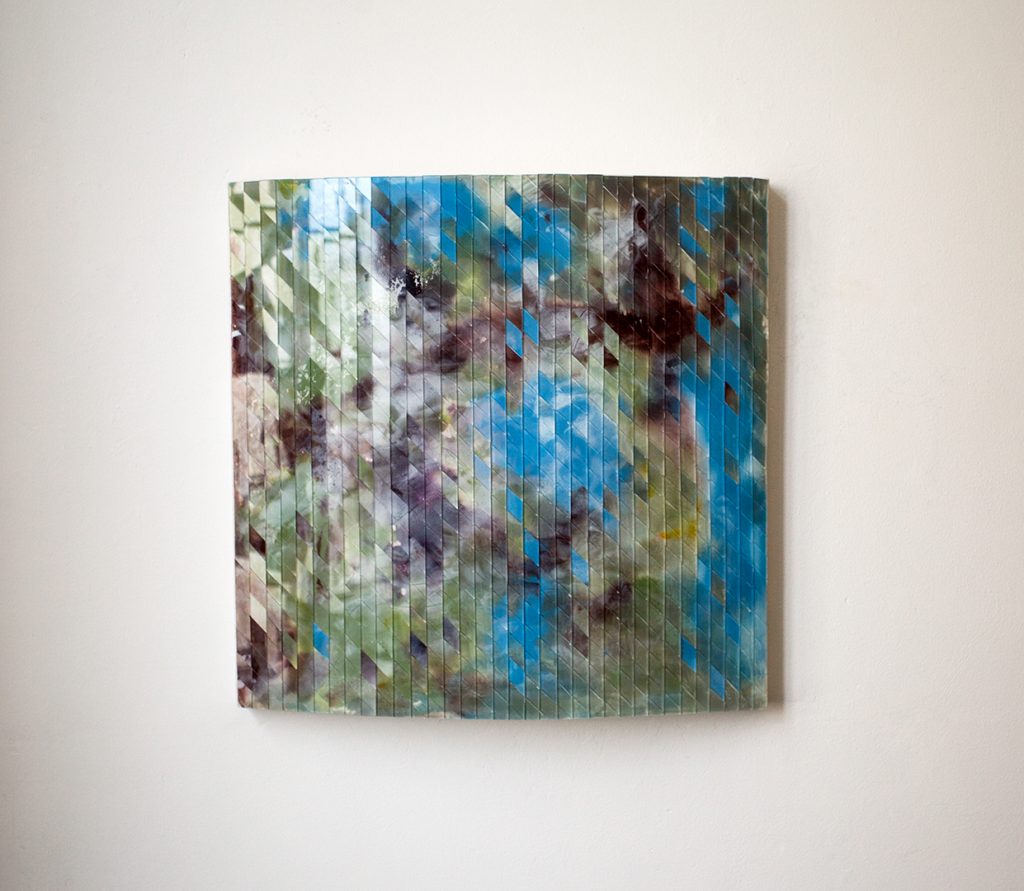
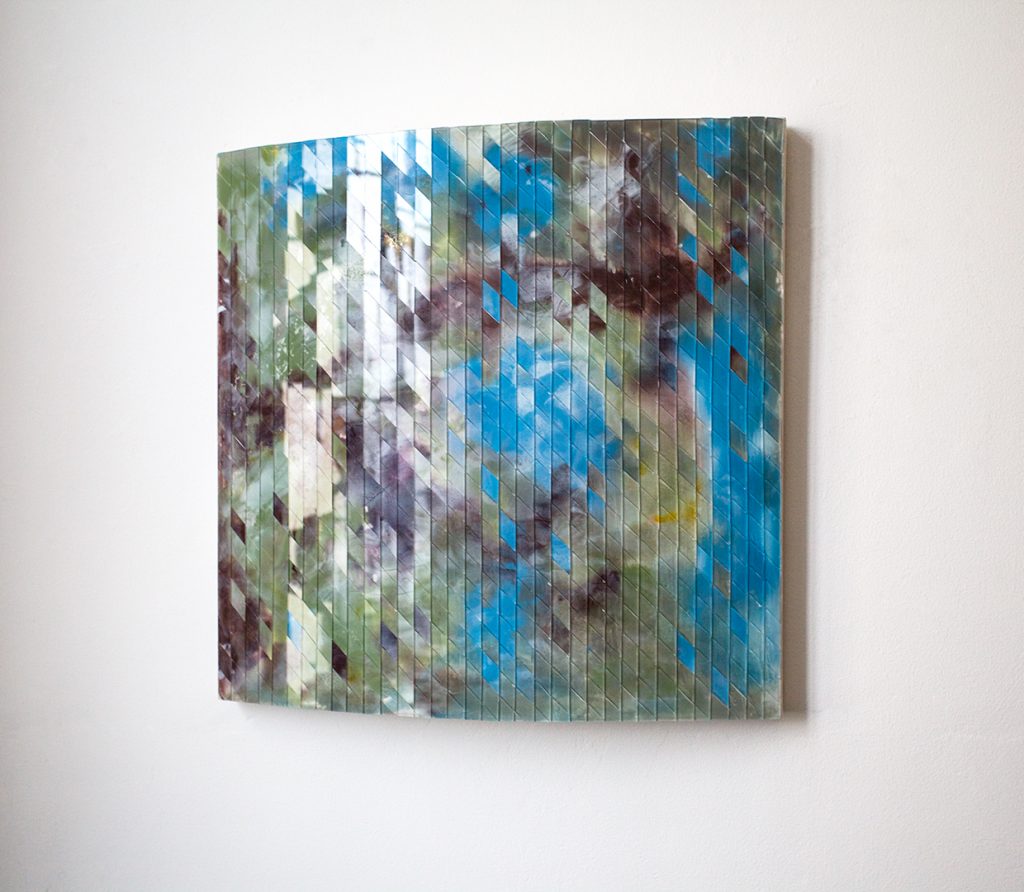
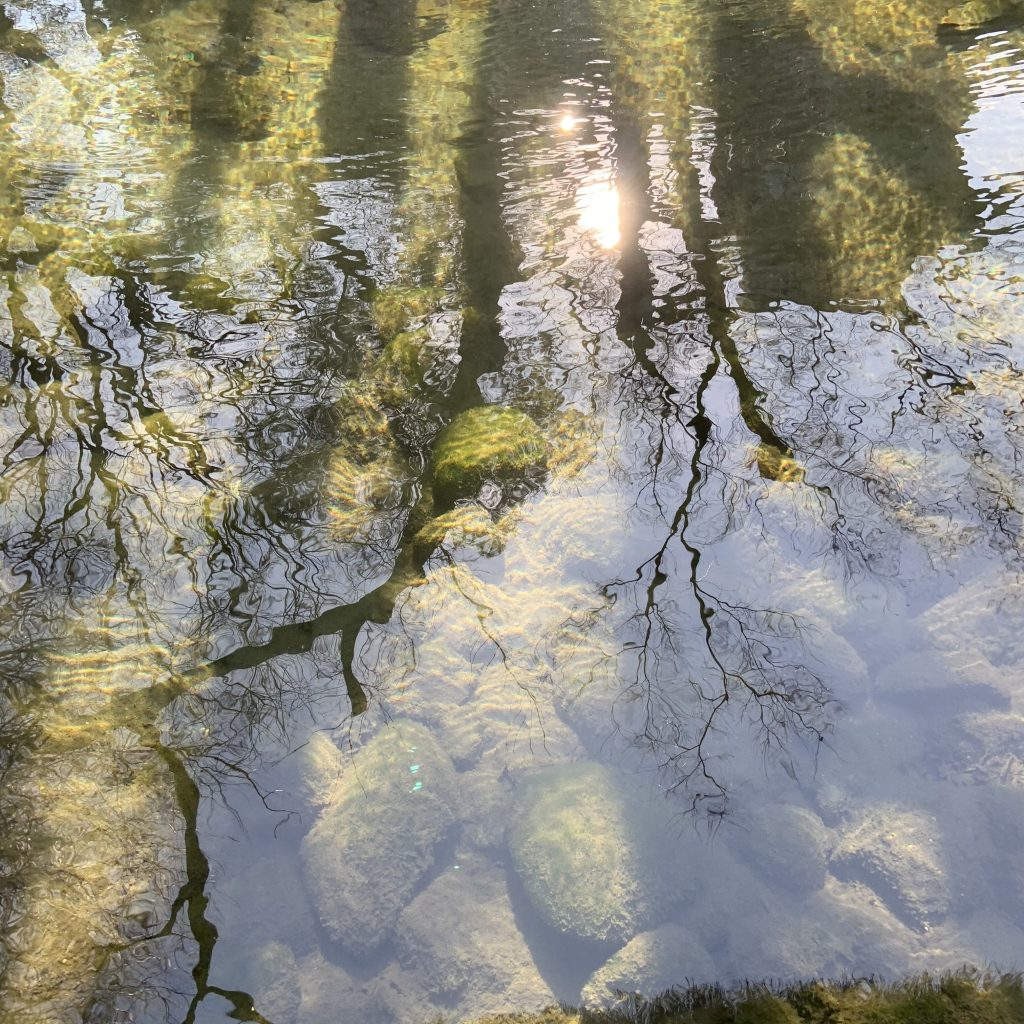
I visited several Gardens and Temples whilst I was in Tokyo, and at Happo-en I encountered majestic and brightly coloured koi fish. One huge white koi jumped out of the lake and disrupting the calm surface with ripples that radiated to my feet. Another fish investigated the mossy, celadon coloured rocks. It was a cold February day and the sky was a deep blue.
450 x 450 x 80mm
Oceania: Vermeer 47 and 46 Nezu
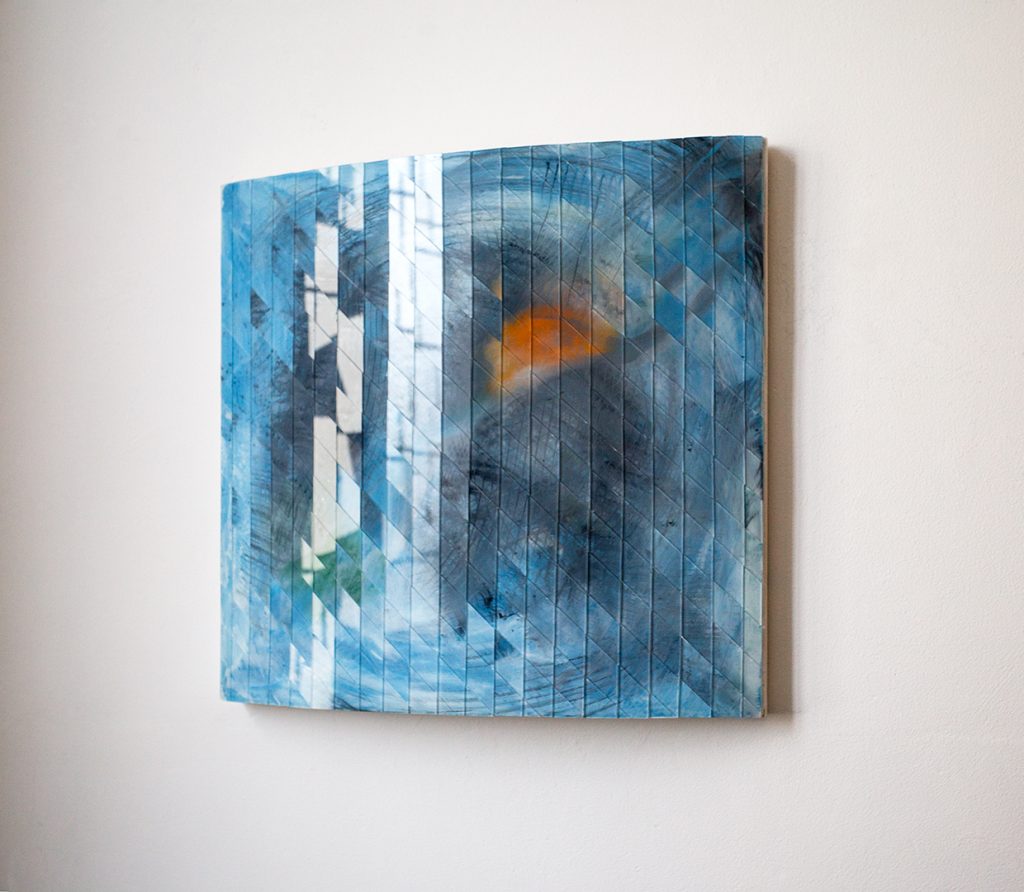


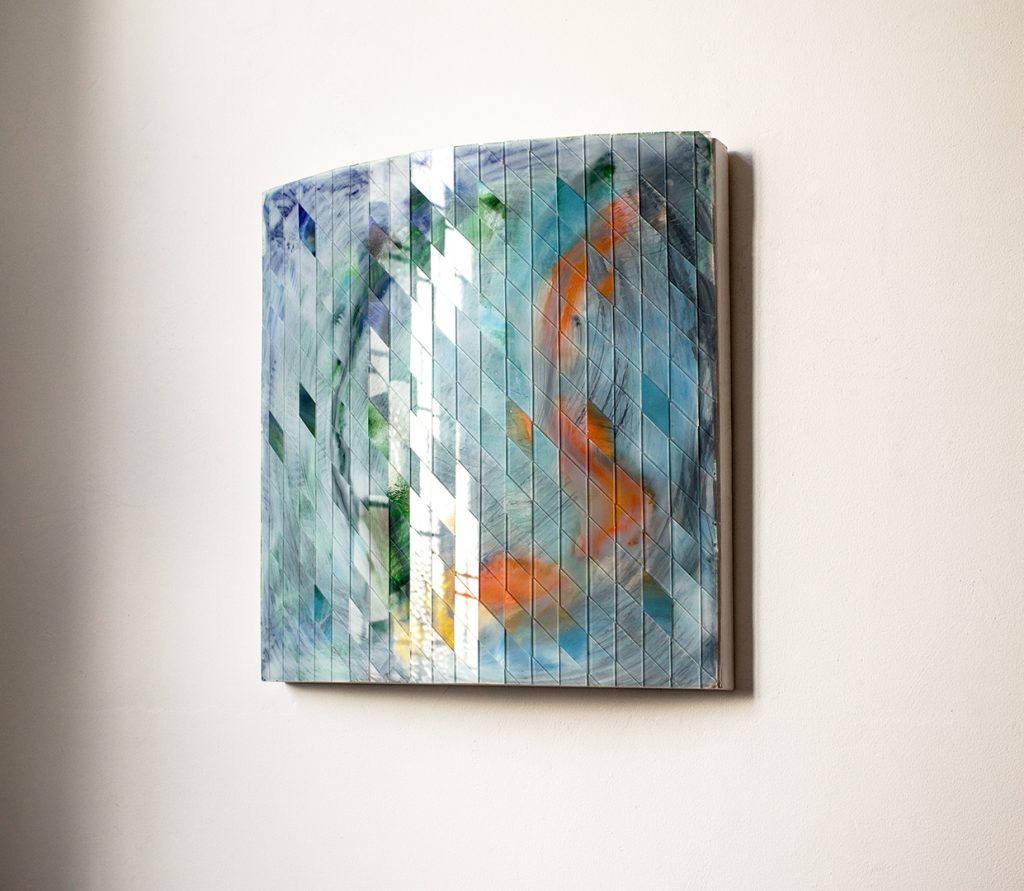
Whilst in the gardens at Nezu Museum, Tokyo, I encountered many bright orange and silvery white coloured koi, who swam in the blue, sky-reflecting ponds.
450 x 450 x 80mm.
Oceania: Vermeer 45 Senso-ji
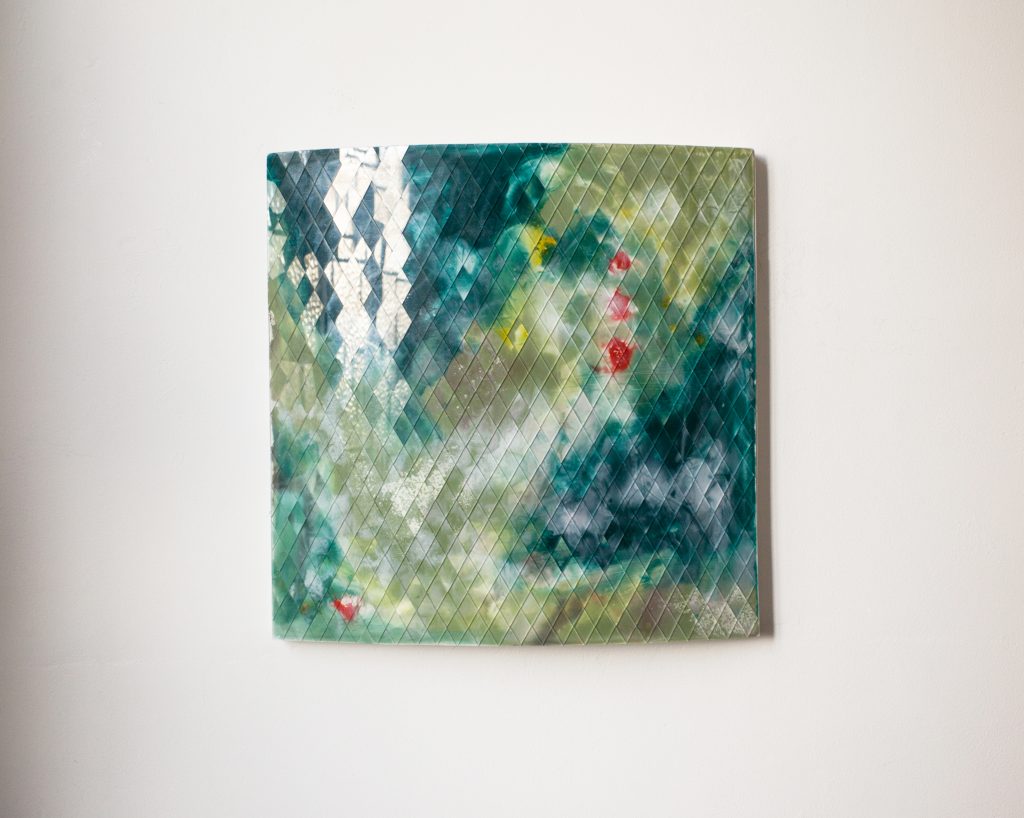
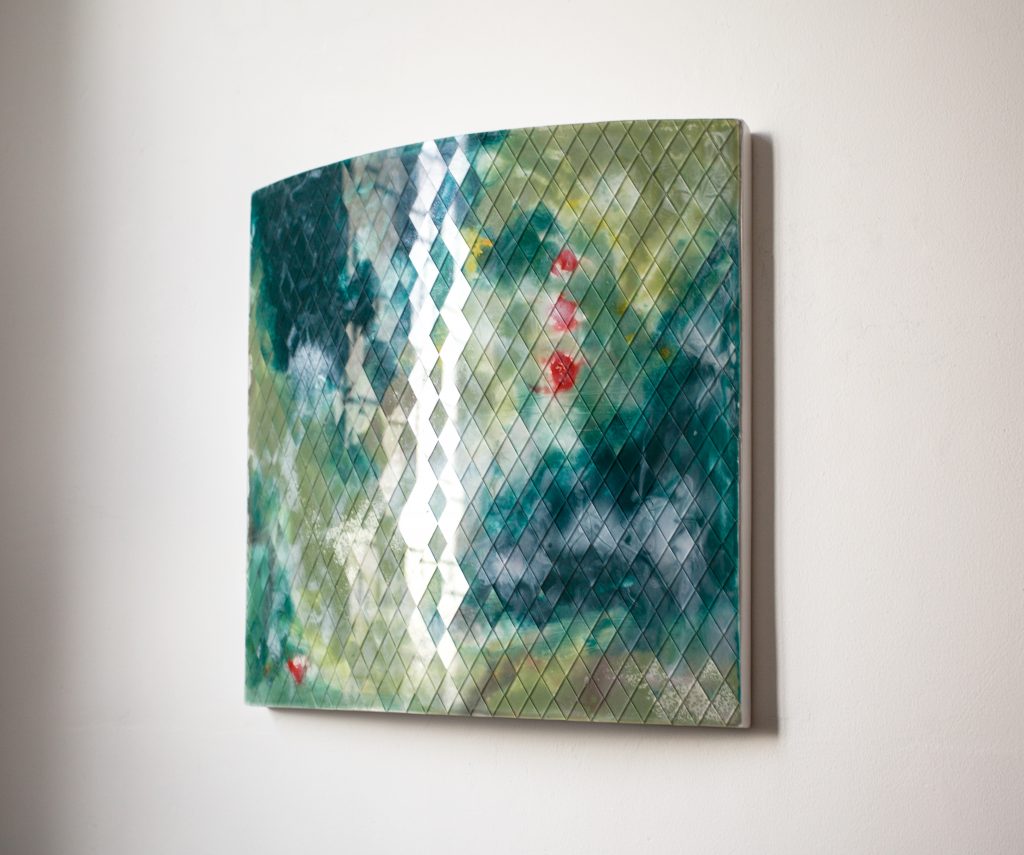
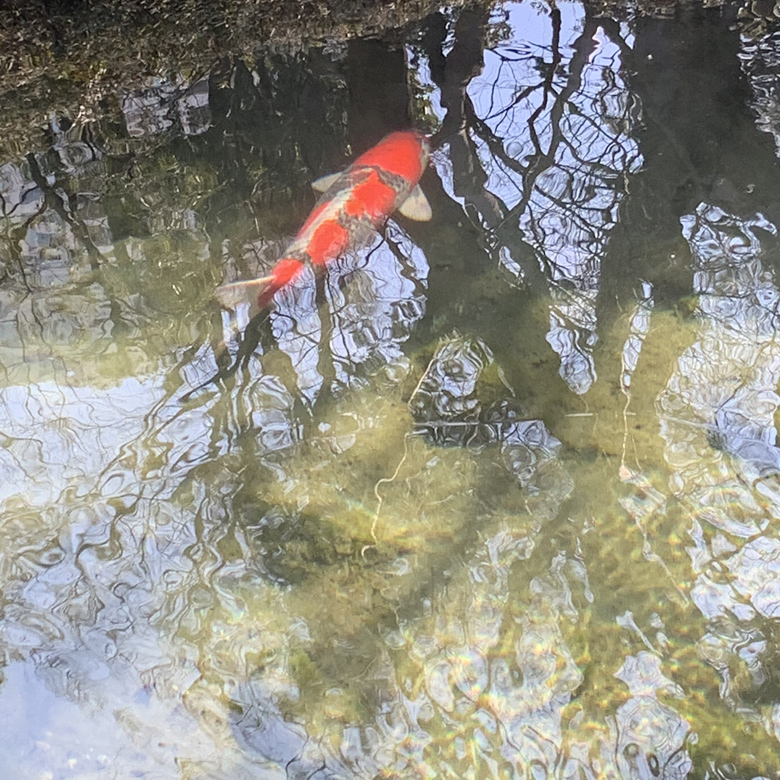
At the beginning of my trip we went to Senso-ji, an ancient Buddhist temple in Tokyo completed in the year 645. This is where I first encountered koi. They were swimming in a water course in an ancient temple garden located to the side of Senso-ji, where there was a waterfall and a bridge. After a morning of over-stimulated attention, watching them calmed my mind and filtered out all the distractions and confusion of people and crowds. Their shadowy movements allowed me to refocus and appreciate with clarity the physical and spiritual dimensions of each new experience of the day.
450 x 450 x 80mm
Oceania: Vermeer 39-44 Goat Island
Oceania Vermeer 39, 40, 41, 42, 43, and 44, Goat Island
When I left Tokyo, I traveled to New Zealand, where I visited some wild places, teaming with life and fiercely, proudly protected by legislation and common sense.
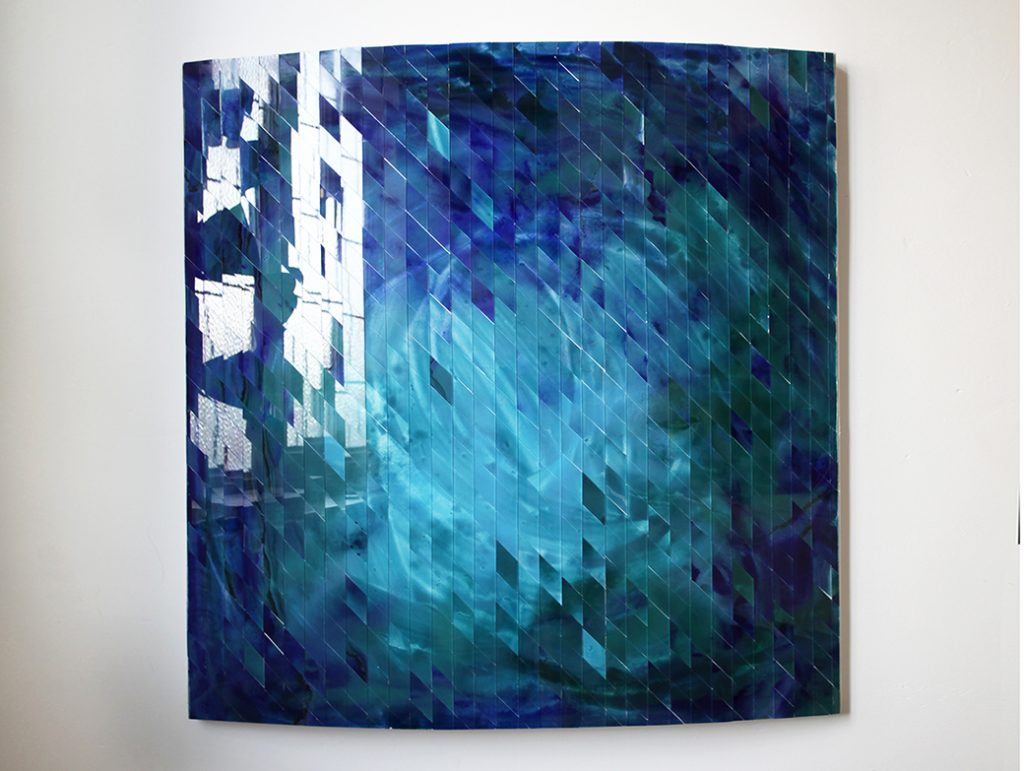
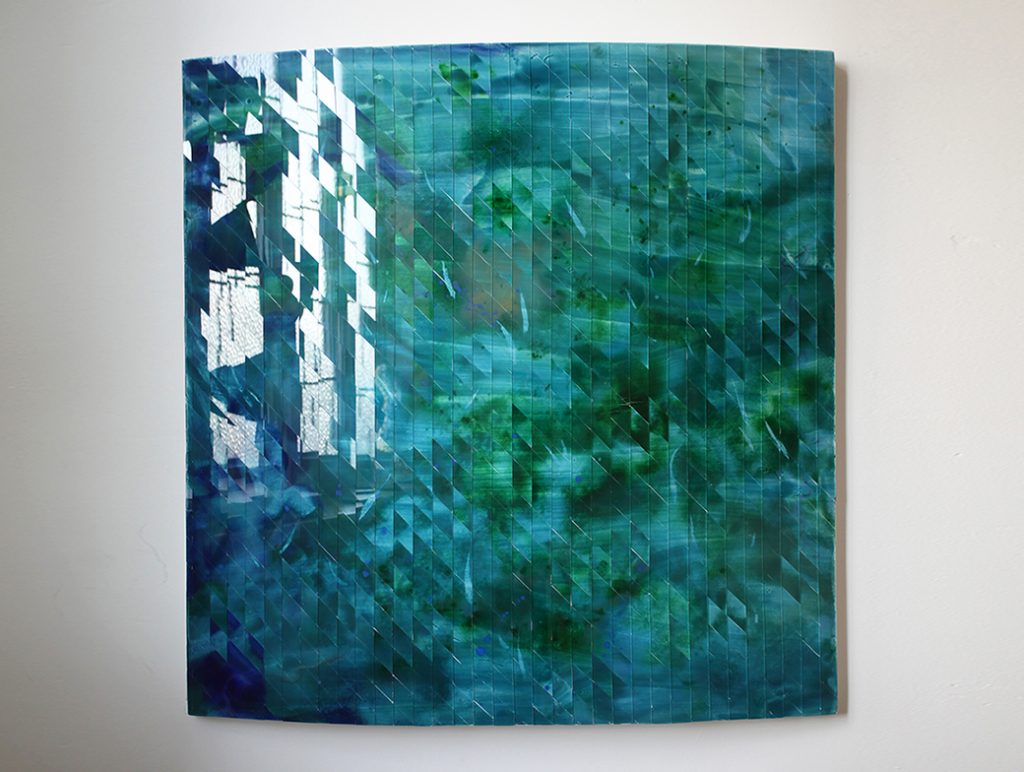
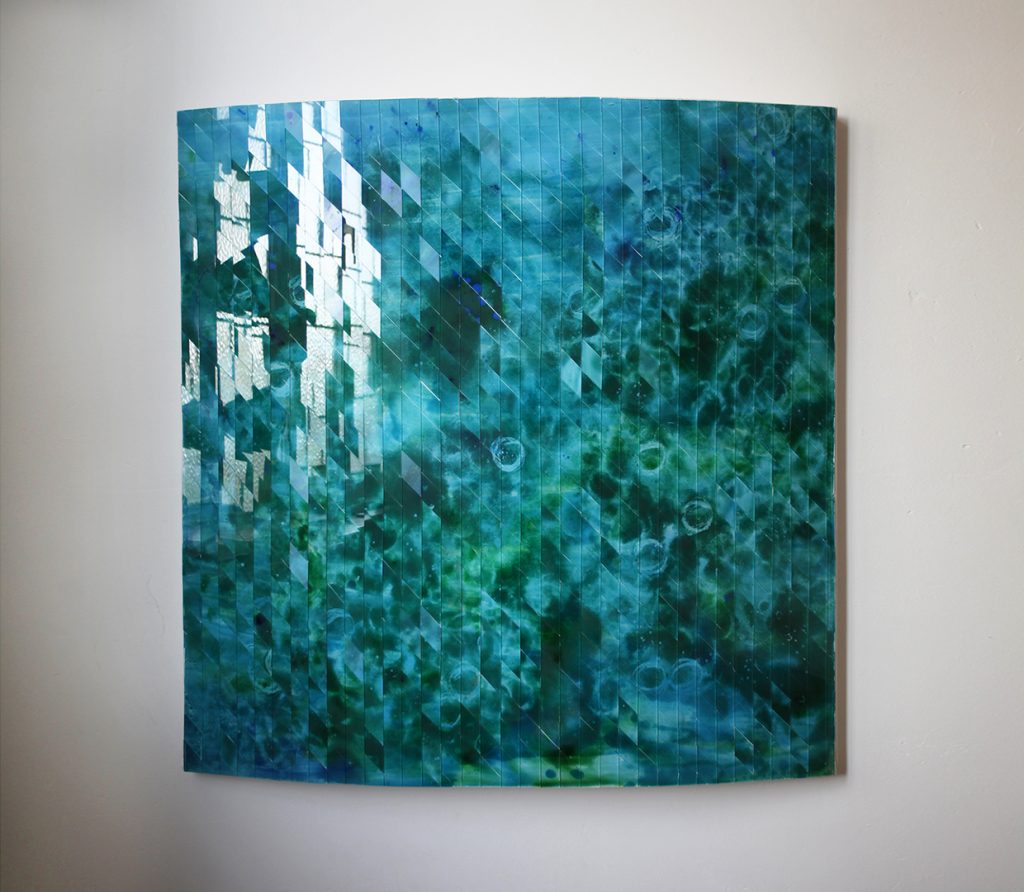
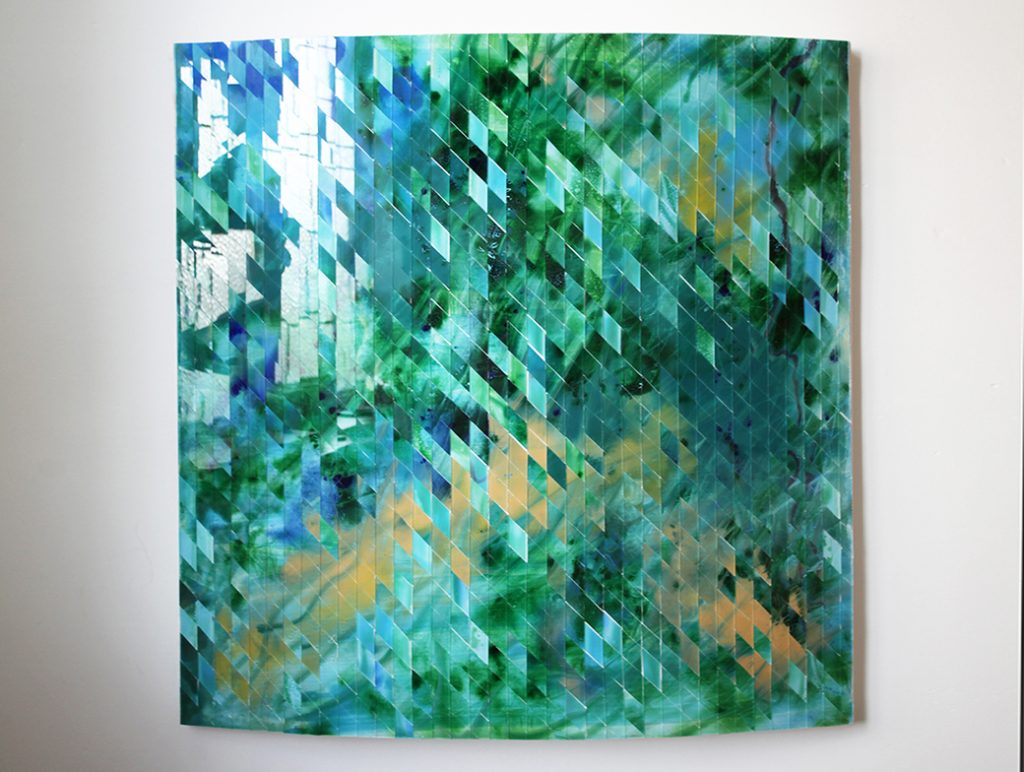
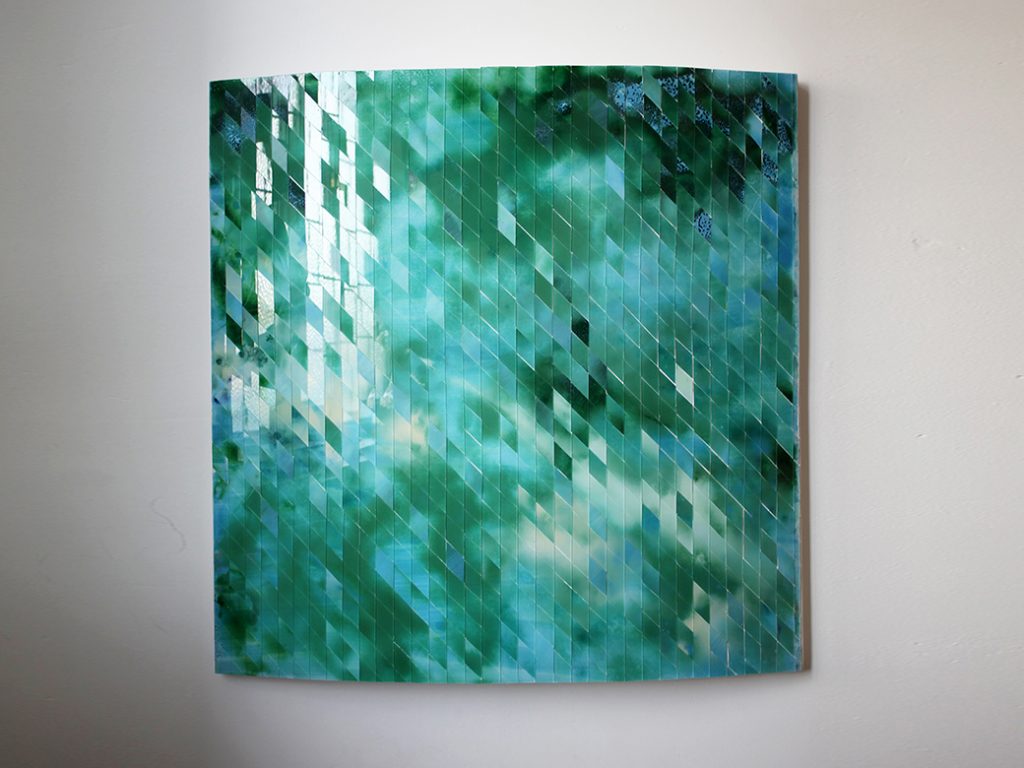

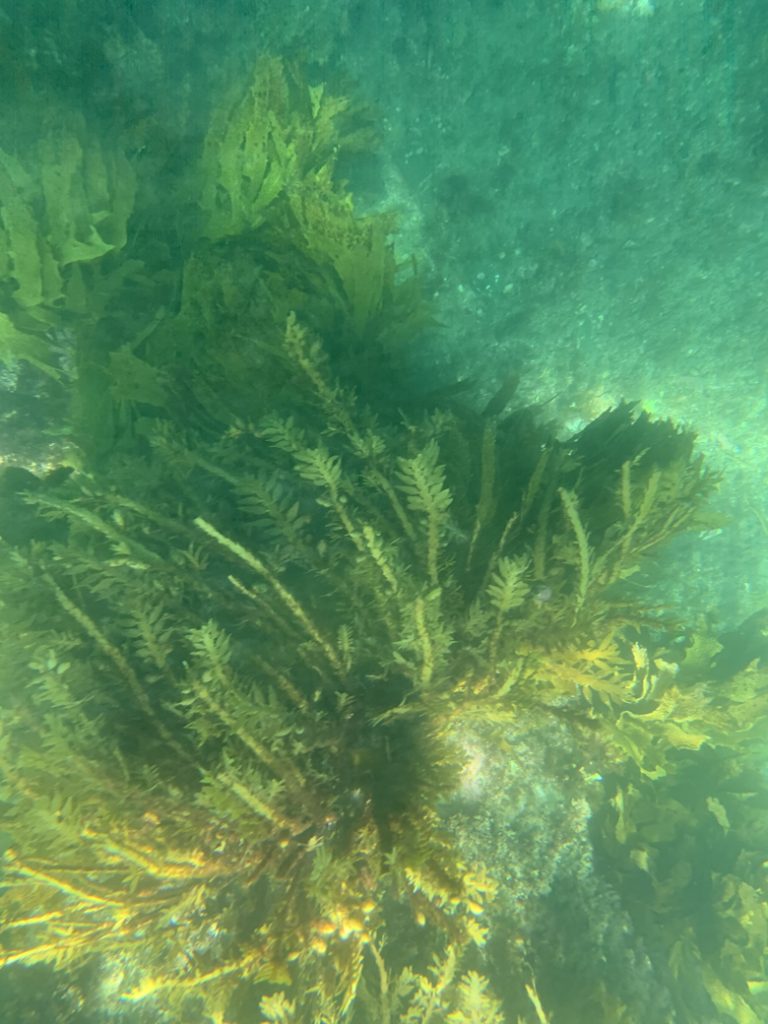
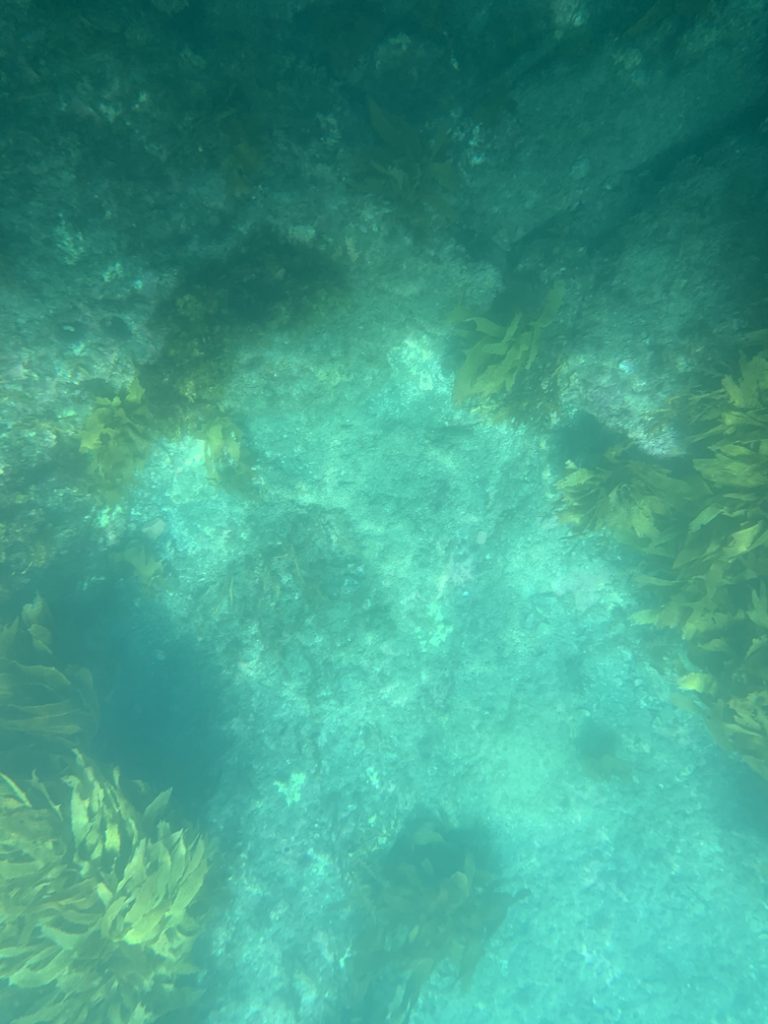
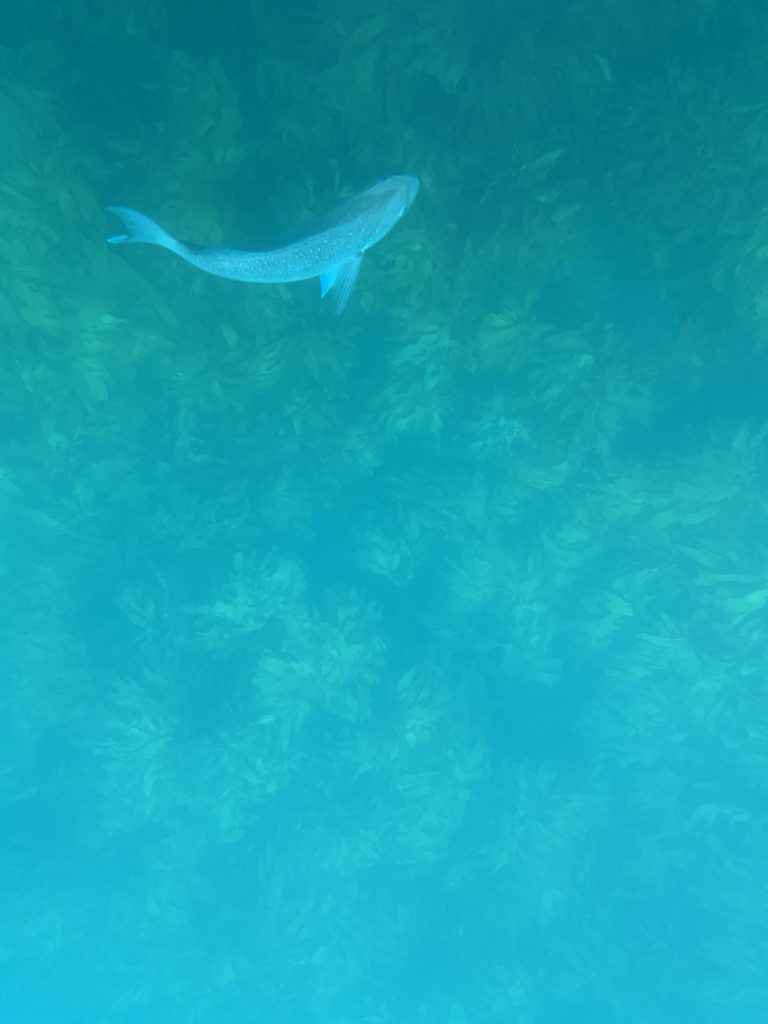

These six works relate to a journey in a glass-bottomed boat around the marine sanctuary of Goat Island near Auckland. As we left the shore, a sequence of changes passed across the glass. Initially, white foam under the glass obscured our view of the blue water, but this was soon replaced by clouds of sand which stirred the water into a thick, viscous green. This then gave way to lush vegetation in vibrant greens, highlighted with yellow-gold sunlight. The plants’ leaves, some narrow and some broad had different textures. Some had crinkle-edged fronds and others had rows of air-filled pods, buoying the leaves so they caught the polarised rays of sunshine. More air bubbles clung to the glass, reminding us that we were separated from and not immersed in this parallel world. The bubbles were marble-sized and had blue edges. They rolled across the glass window, with the fronds and foliage visible beyond. Then the bubbles disappeared, and we were in deeper water. Shoals of fish teamed everywhere, at every level. The nearest ones were silver-white and clear in the filtered sunlight. Further down they appeared darker in colour but still distinct. The last image is framed with dark rocks deep below and, beyond them, pale sand, with a single shadowy fish in the distance, swimming slowly across and out of view.
The six panels were painted in sequence, each experience merging into the next, a bit like planet Earth seen from space.
Dimensions each: 920 x 920x 100mm.
Oceania: Vermeer 37-38 Orua
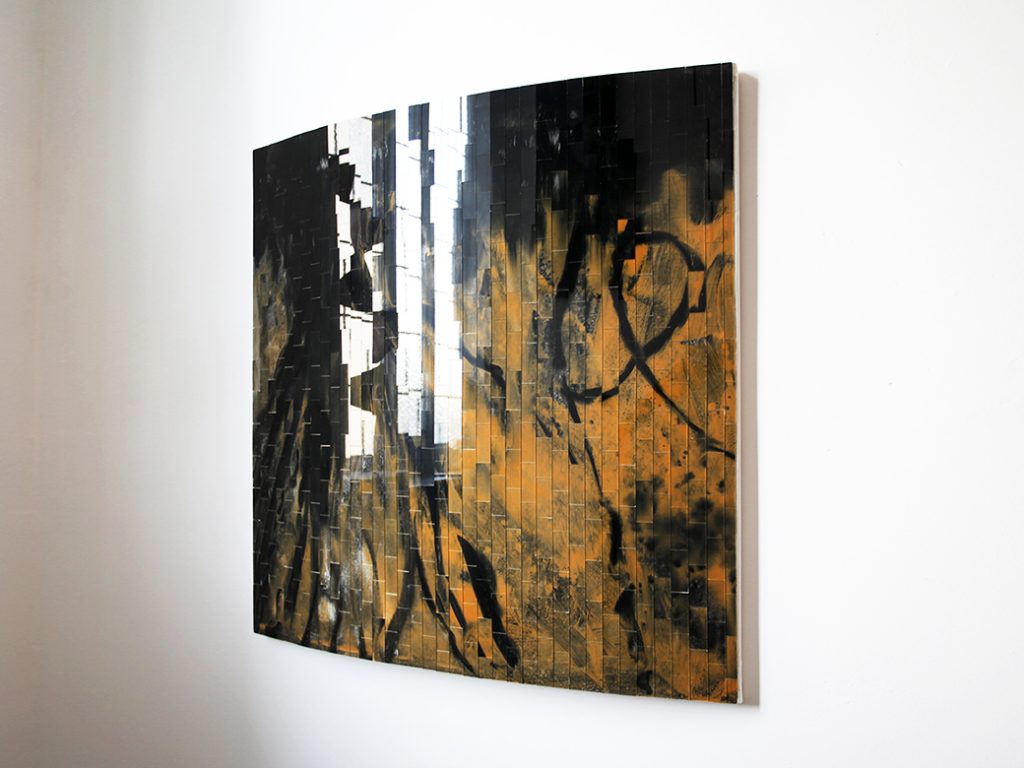
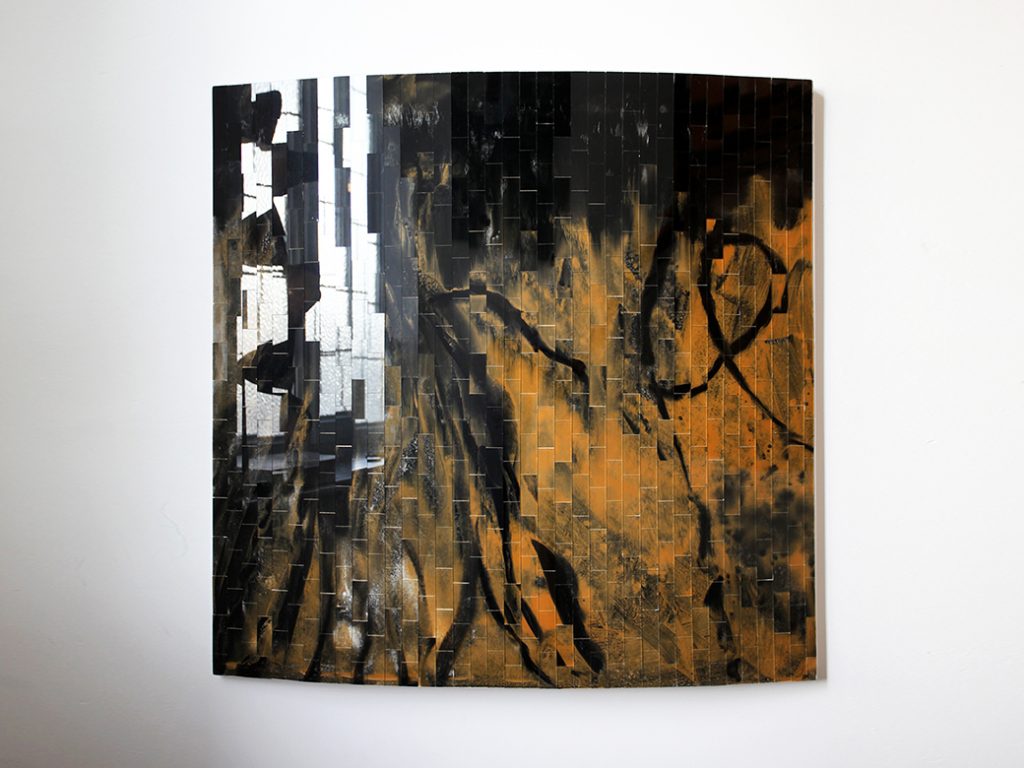

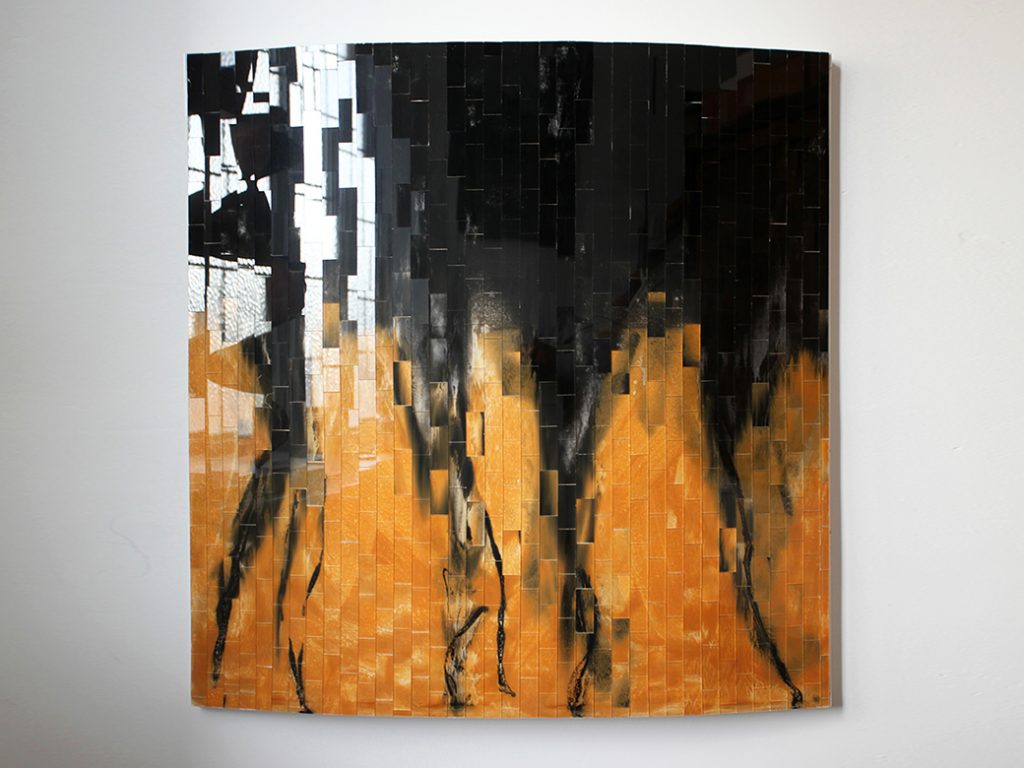
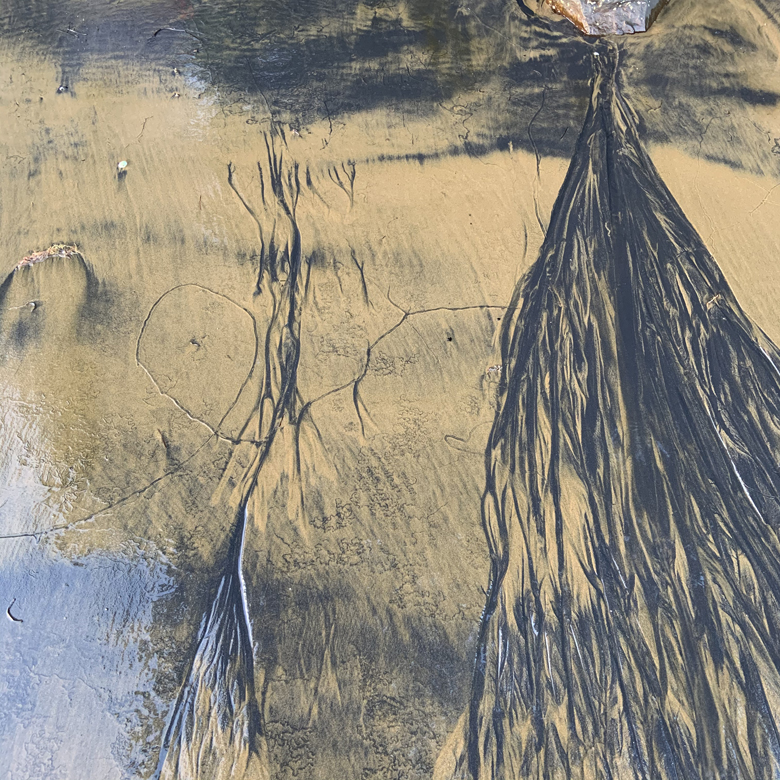
Orua beach, near Auckland, is below a semi-tropical forest cliff. The black, fertile soil washes down the slopes onto the beach and into the fine particles of pale sand, creating temporary river-like delta and strata.
Dimensions each: 920 x 920x 100mm.
Oceania: Vermeer 35-36 Shugen-ji
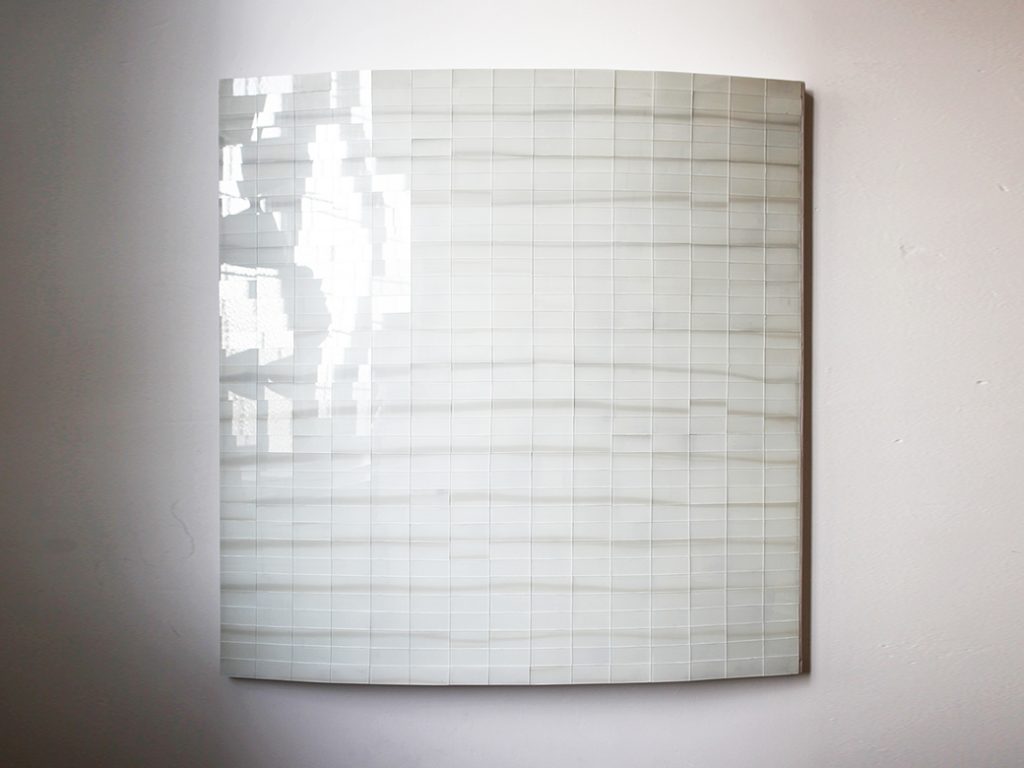
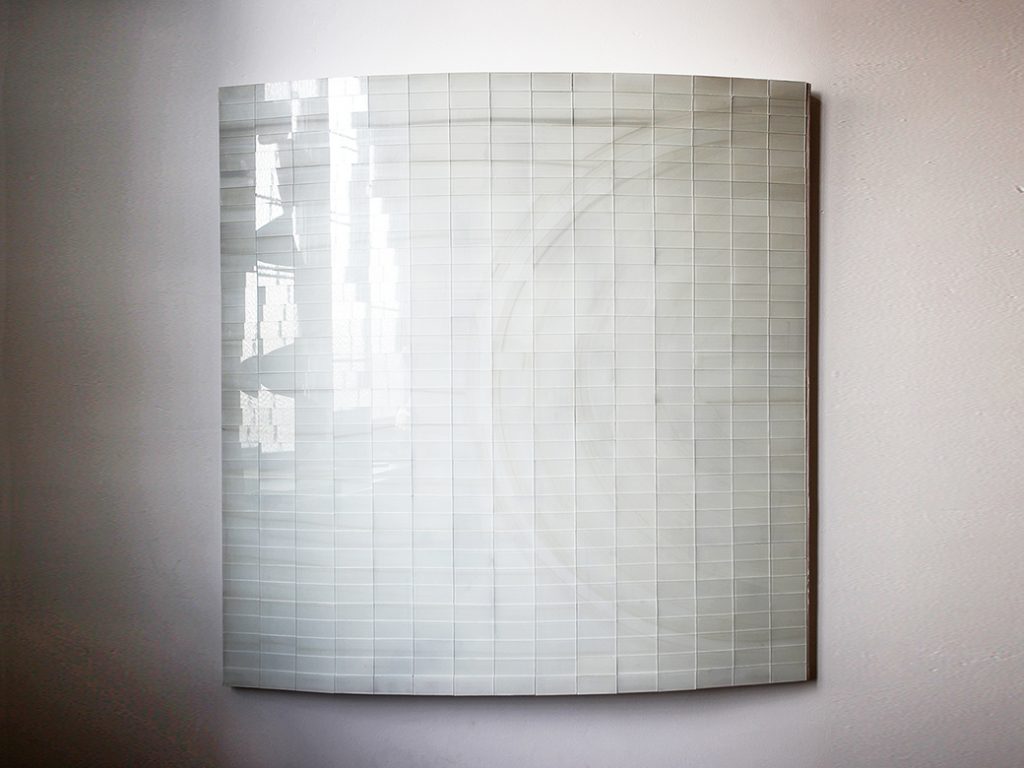
In addition to the best-known temples and shrines, there are many smaller religious structures punctuating the streets of Tokyo, tucked in between modern developments. One such Buddhist temple is Shugen-ji. To one side of the temple is a graveyard with shrines, and a columbarium-like structure for the storage of funeral urns. I witnessed the raking of gravel here: a meditative representation of water and waves, or of emptiness. For these two Vermeer pieces, I wanted to reproduce in the brush strokes the way that gravel is raked, with contemplation and with mindful intention.
In Japanese gravel gardens, the troughs and peaks of raked gravel represent the waves of the ocean.
“Karesansui gardens express water surfaces and wave motions through sand patterns called samon. The history of creating waterless gardens in confined spaces dates to the 11th century. Zen ideology was popular in the 14th century when the Samurai became powerful. As the white sand scattered in gardens symbolized purity, they became sites for rituals and ceremonies.”
Dimensions each: 920 x 920x 100mm
Oceania: Vermeer 32-34 Happo-en
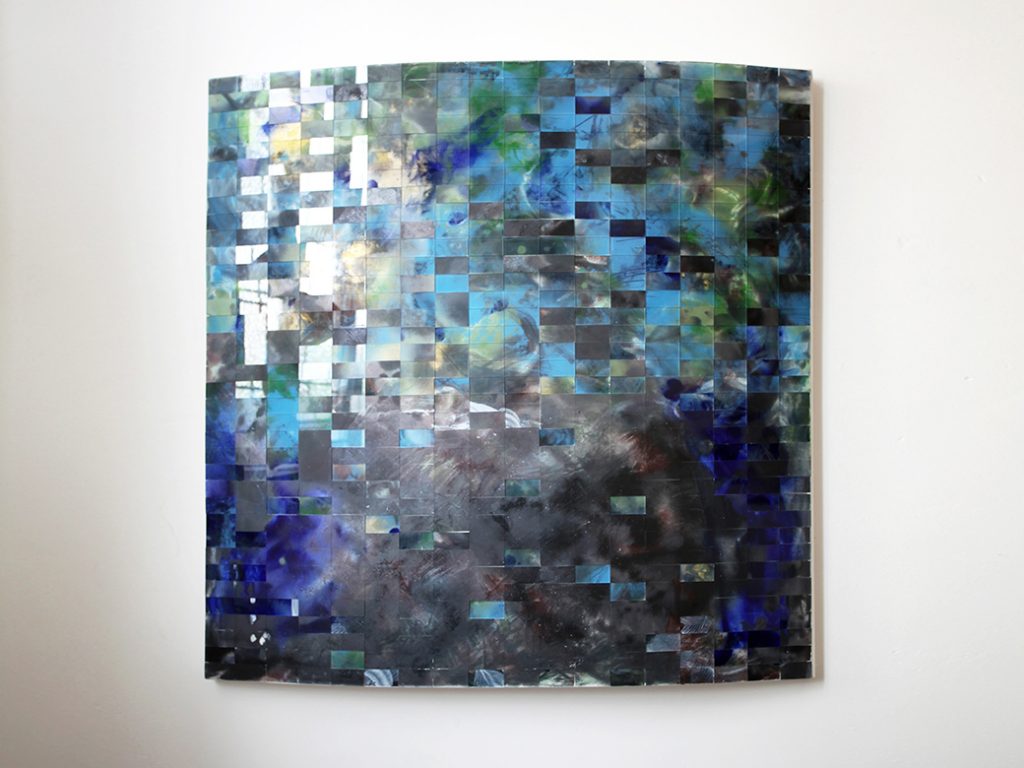
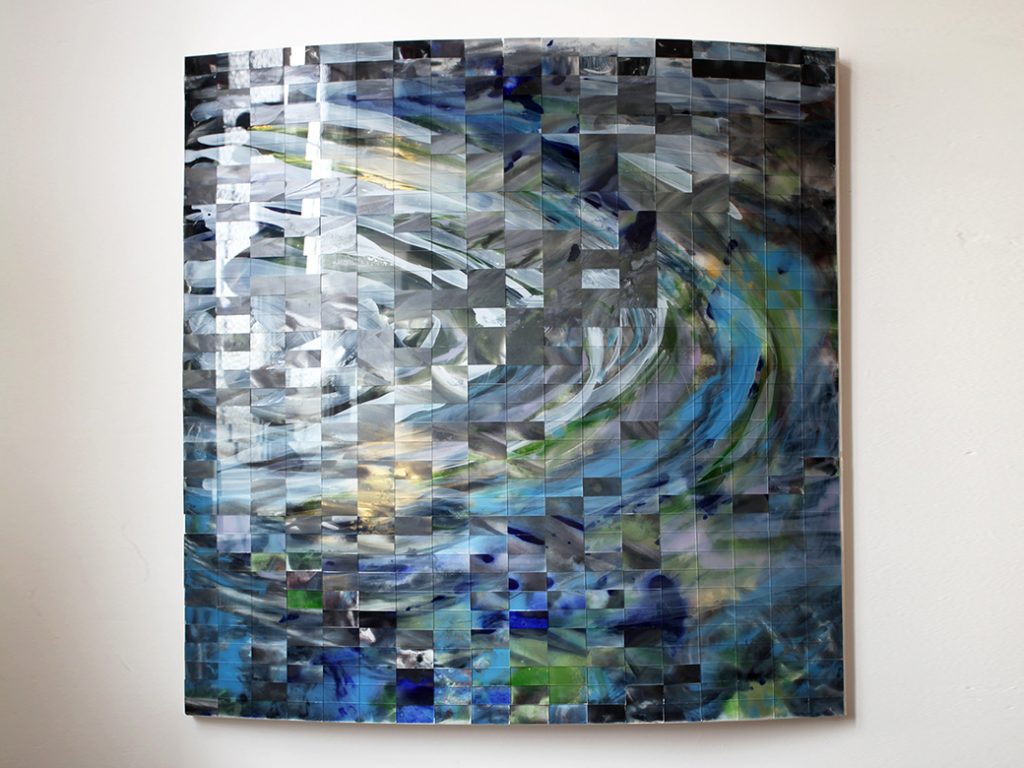
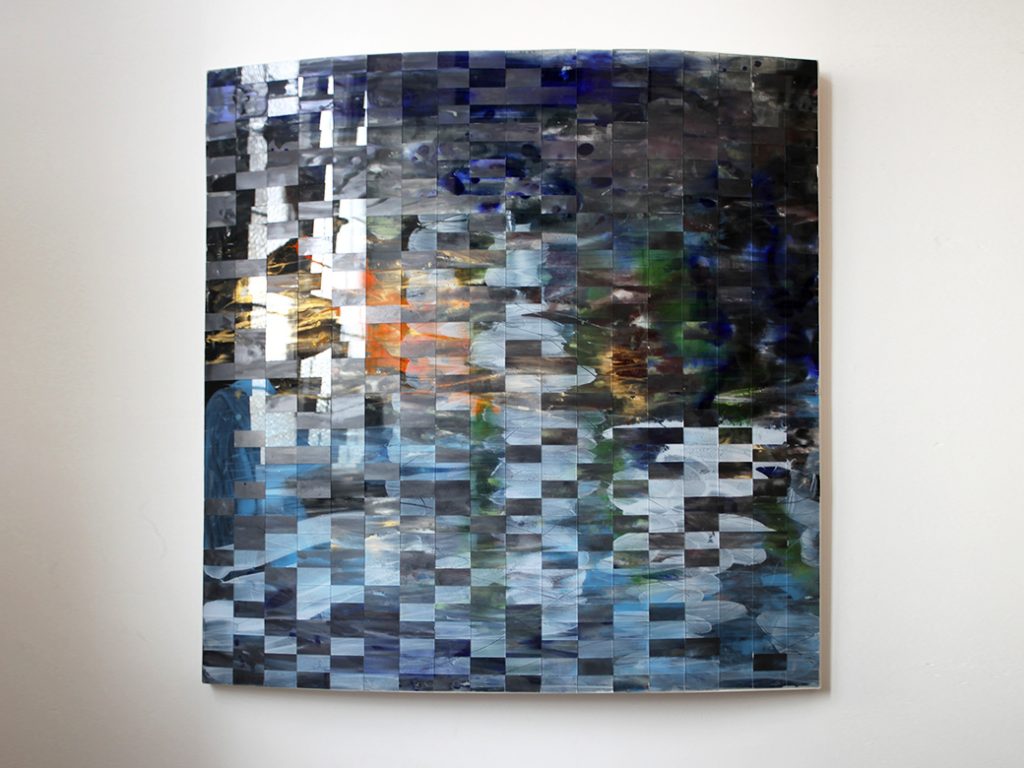
Happo-en is a series of pieces that are designed to be placed either on a wall side by side or lying down. They were painted as one composite image, with the section numbered 32 at the bottom, 33 above, and 34 at the top, forming a narrative.
They describe a particular experience from my trip that struck me as profound. Happo-en is one of the most ravishing gardens in Tokyo. I was there on a crisp, blue-skied February morning. It was my last morning in Japan. I was standing on a boulder at the edge of a lake, listening to the stillness. A splashing and disturbance startled me, and I saw a white koi carp, head clear out of the water, gliding slowly and creating a wake whose ripples spread across the entire surface. A few minutes later another koi, this time bright orange, swam into the shallows and lingered near me, taking its time.
Dimensions each: 920 x 920x 100mm
Oceania: Vermeer 30-31 Ueno Onshi
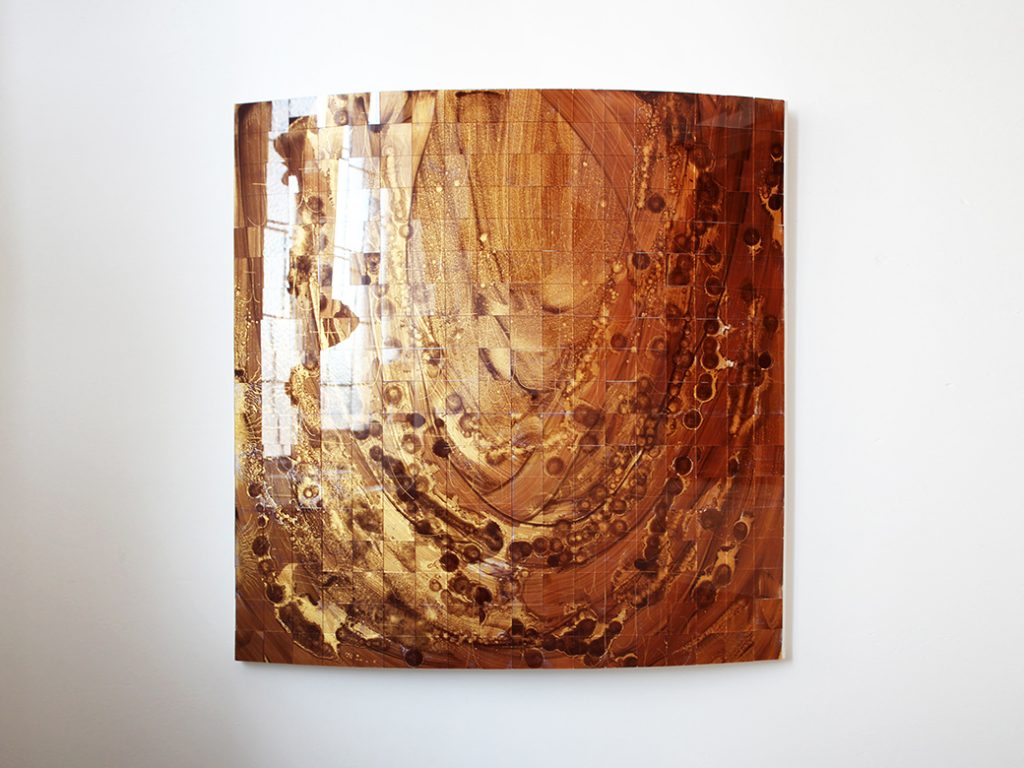
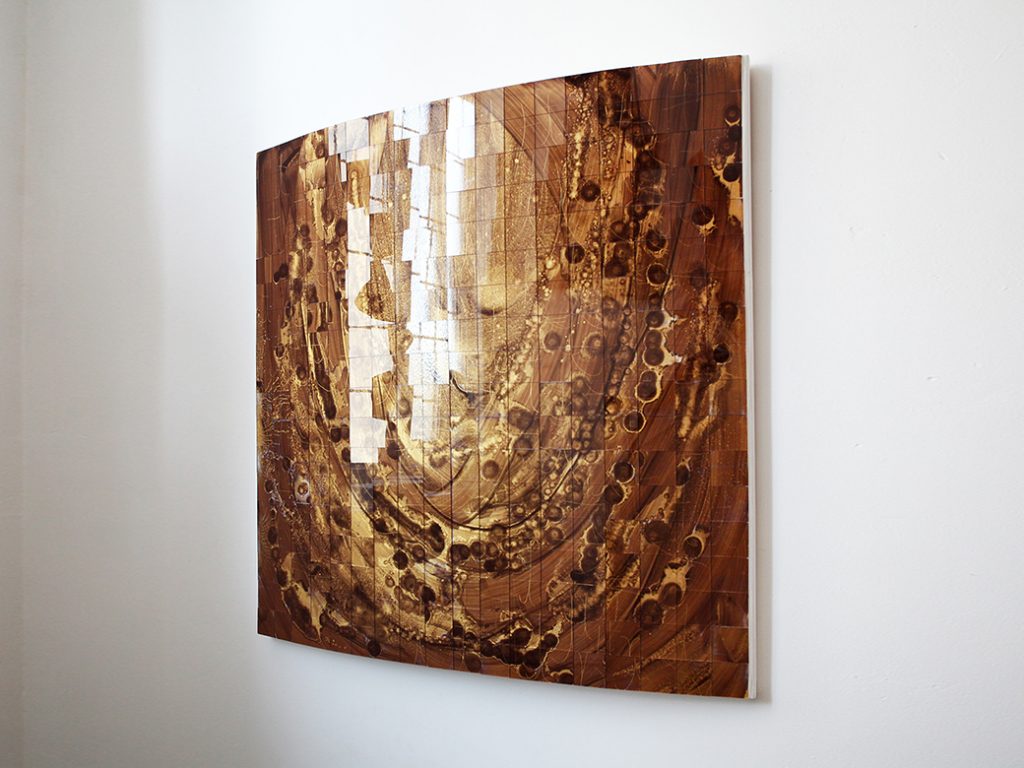
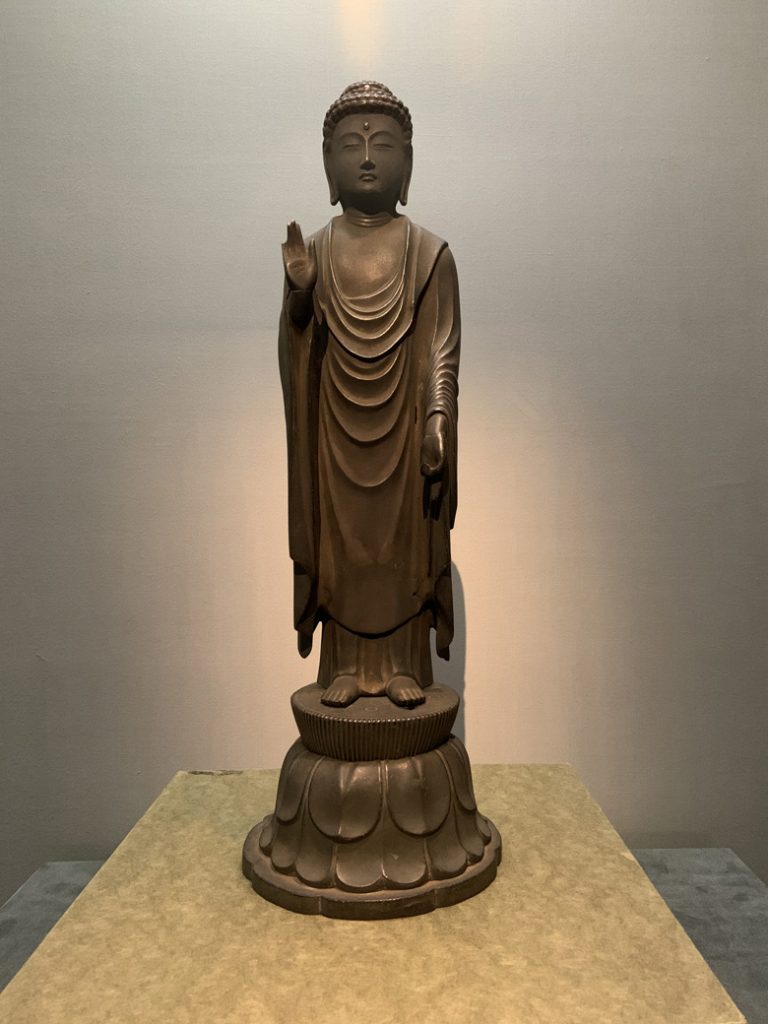
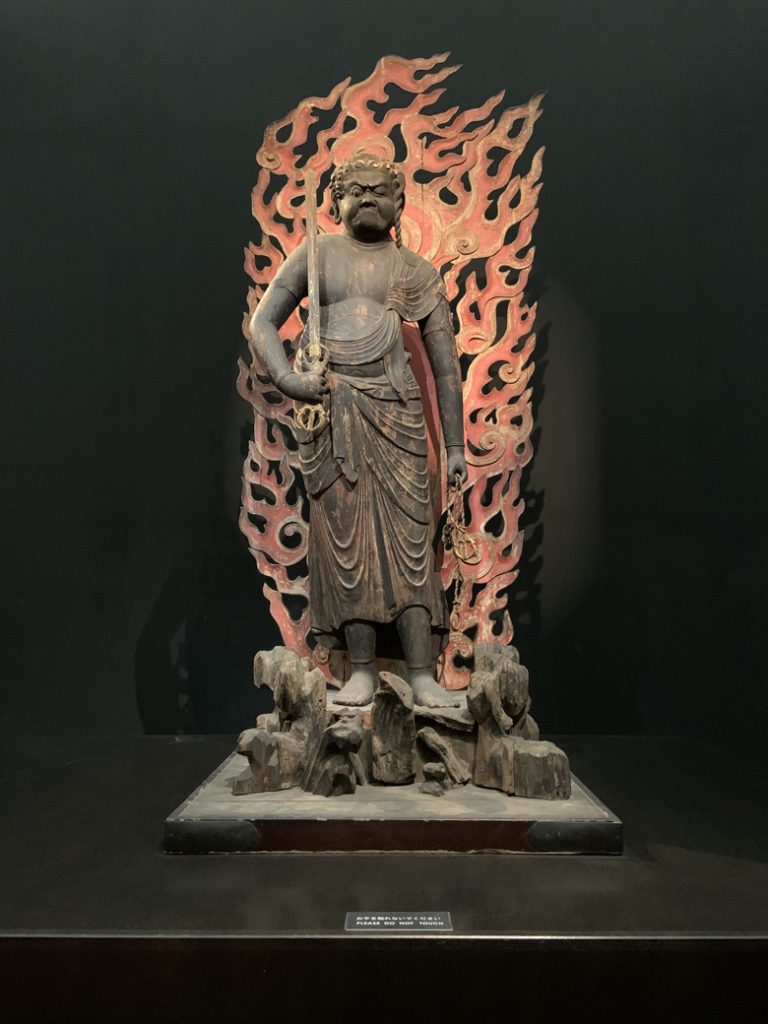
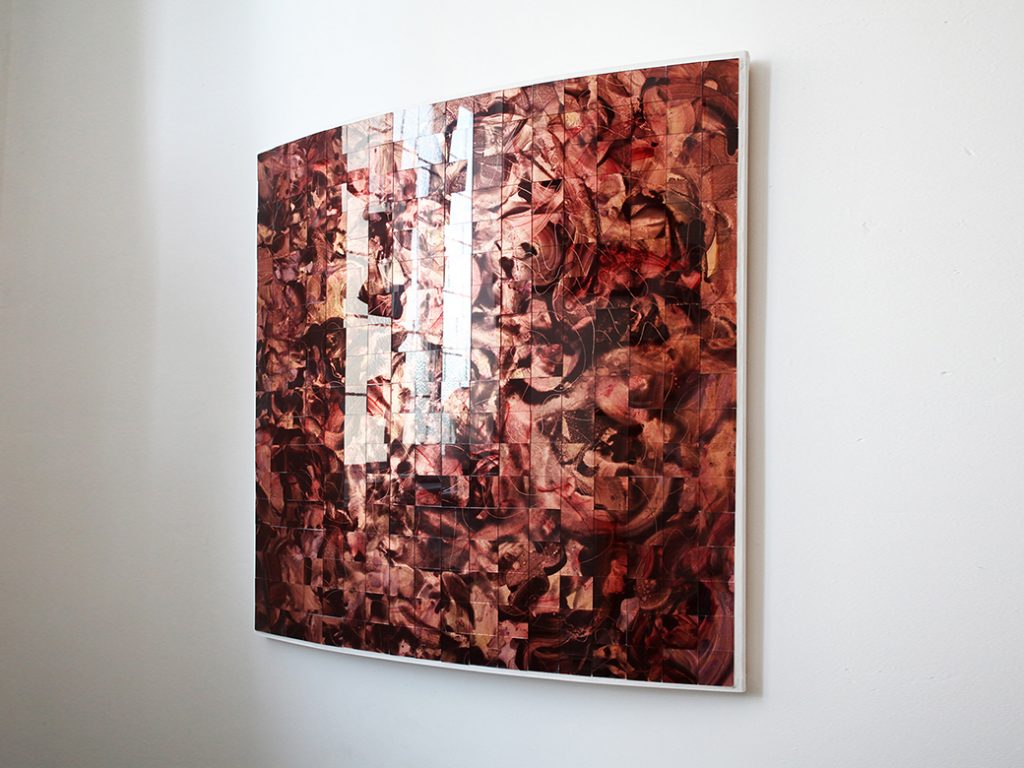
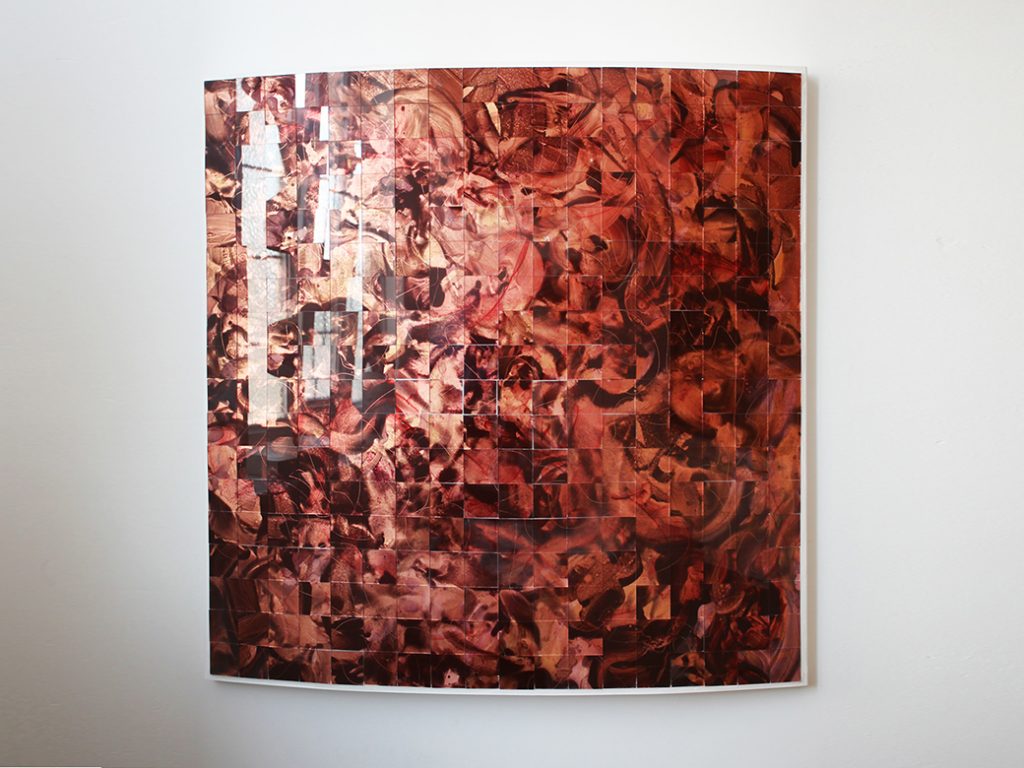
The Tokyo National Museum is in Ueno Onshi. An 11th century sculpture of the Buddha is the primary inspiration for this work, but there are elements of other pieces in here too. The statue is in bronze: magnificent yet simple, gleaming subtly and imbued with powerful spirituality. For my interpretation, I painted in rich burnt umbers and earth, gilded with gold leaf. I remember focusing on the chest of the sculpture, where folds of the Buddha’s garments created a necklace of cloth. The idea of the simple adornment of a drape of fabric seemed to embody the idea of meditation, of concentrating on what is fundamental and not being distracted by luxury or frippery. A second element influenced this work: when in New Zealand, with the memory of the Buddha’s statue still in my mind, I discovered several giant necklace-like sculptures in museums. They in turn reminded me of celebrational lays or wreaths worn during festivities. Here, the gold leaf on the reverse of the painted glass gleams through the pigments, suggesting a spiritual ascent.
Vermeer 30 is inspired by Fudo Myoo, who is one of the five Wisdom Kings in Buddhist texts. This panel references a 12th-century sculpture in the Tokyo National Museum in Ueno Onshi, which has carved and painted flames behind the figure, framing its distinctive and fearsome facial expression.
“Fudo Myoo (the Immovable One) is one of the powerful deities known as the Five Bright Kings in Japanese Buddhism and folk religion. As a manifestation of the central cosmic Buddha Mahavairochana (Japanese: Dainichi), Fudo is believed to protect Buddhism and its true adherents.”
The glass is painted and then drawn on, to echo the movement in stylised flames. This work has copper leaf gilded onto the reverse to make the colours glow and radiate warmth. In the museum, I saw screens that had been gilded and then overpainted with images. The overall effect is of a reverent and gentle radiance, which both reflects the light and has its own luminosity from beneath the surface.
Dimensions each: 920 x 920x 100mm
Vermeer 28-29 Hama-rikyu
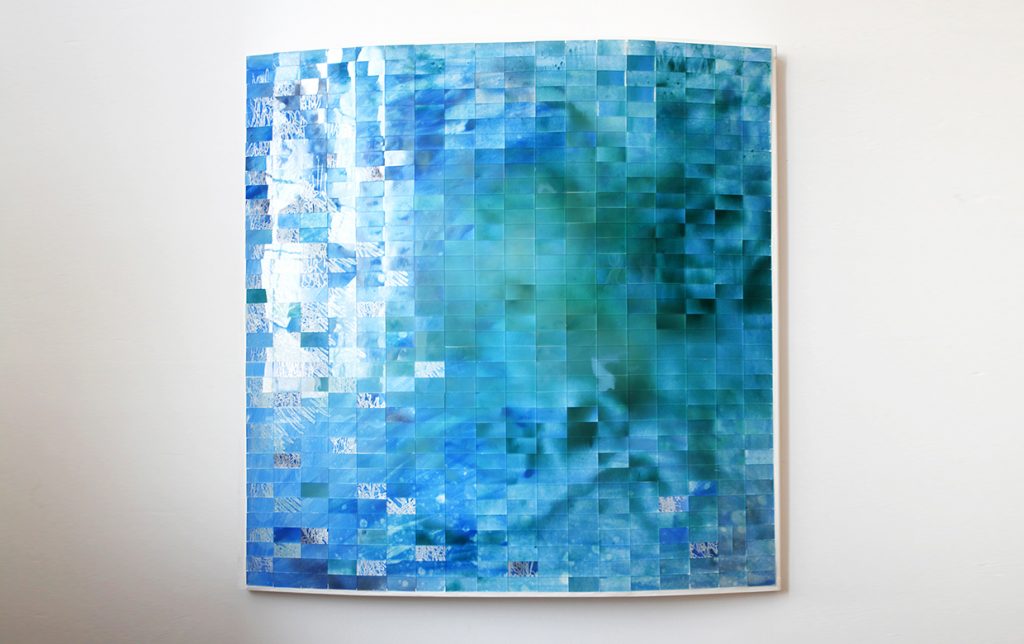
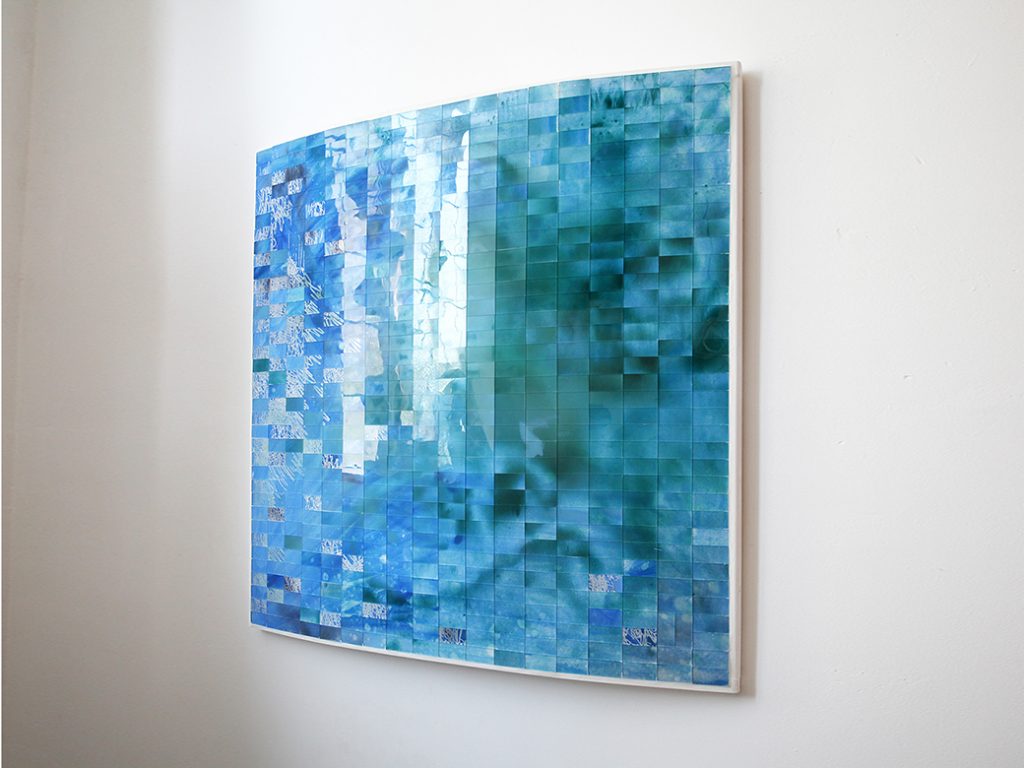
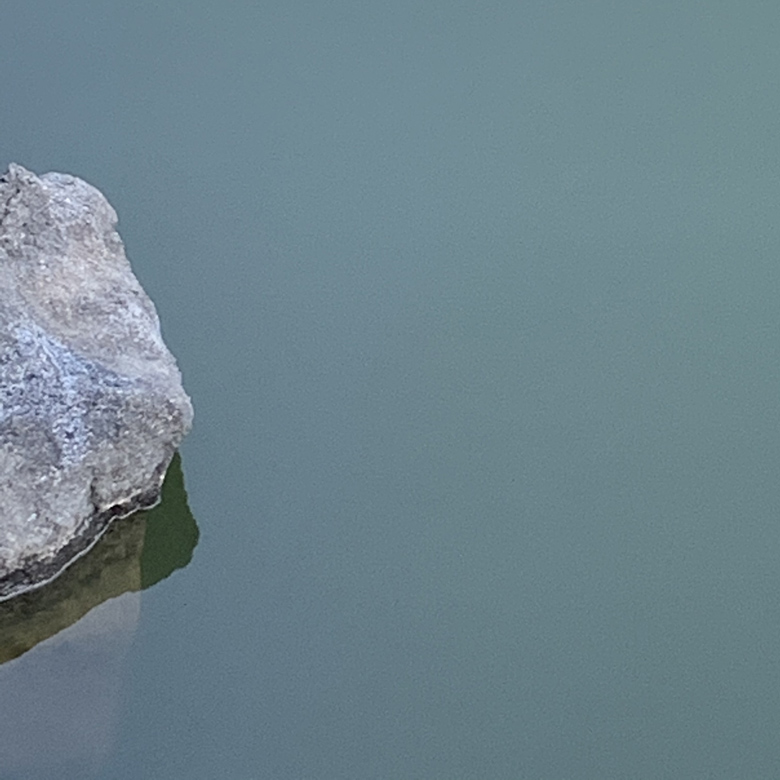
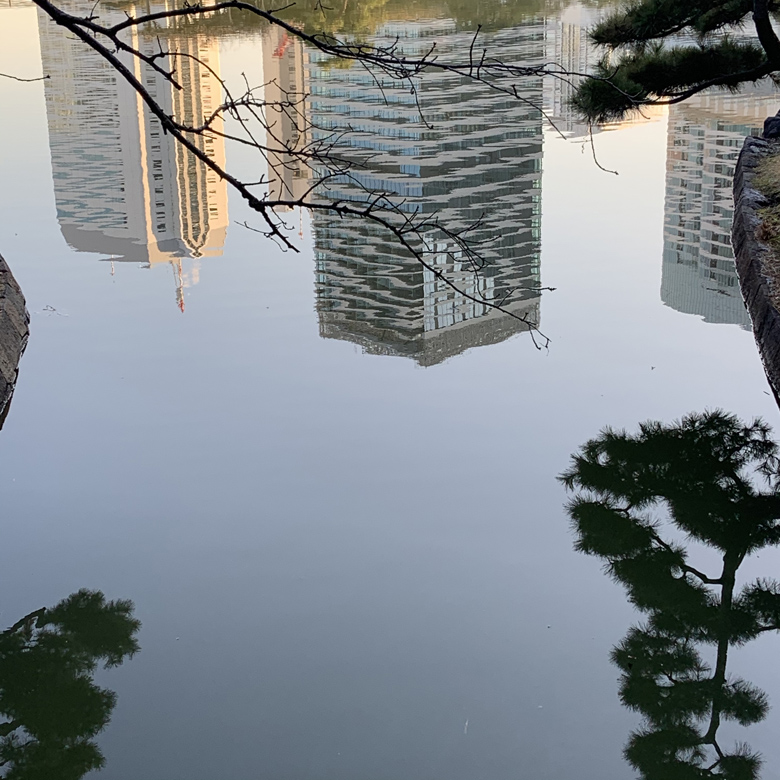
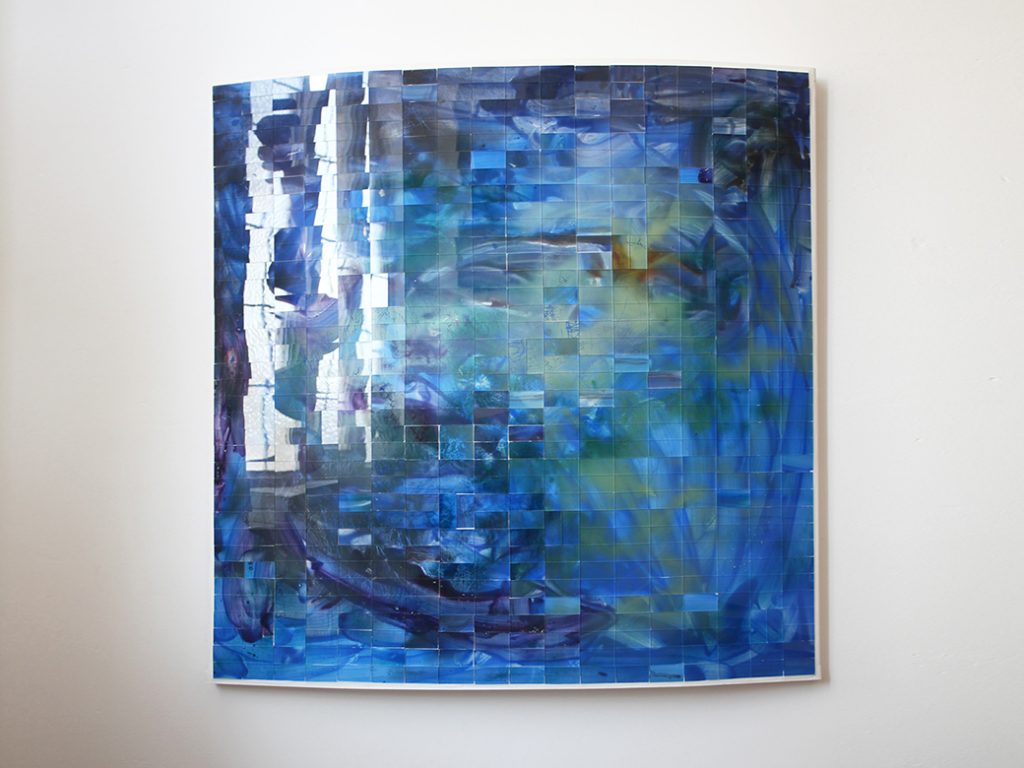
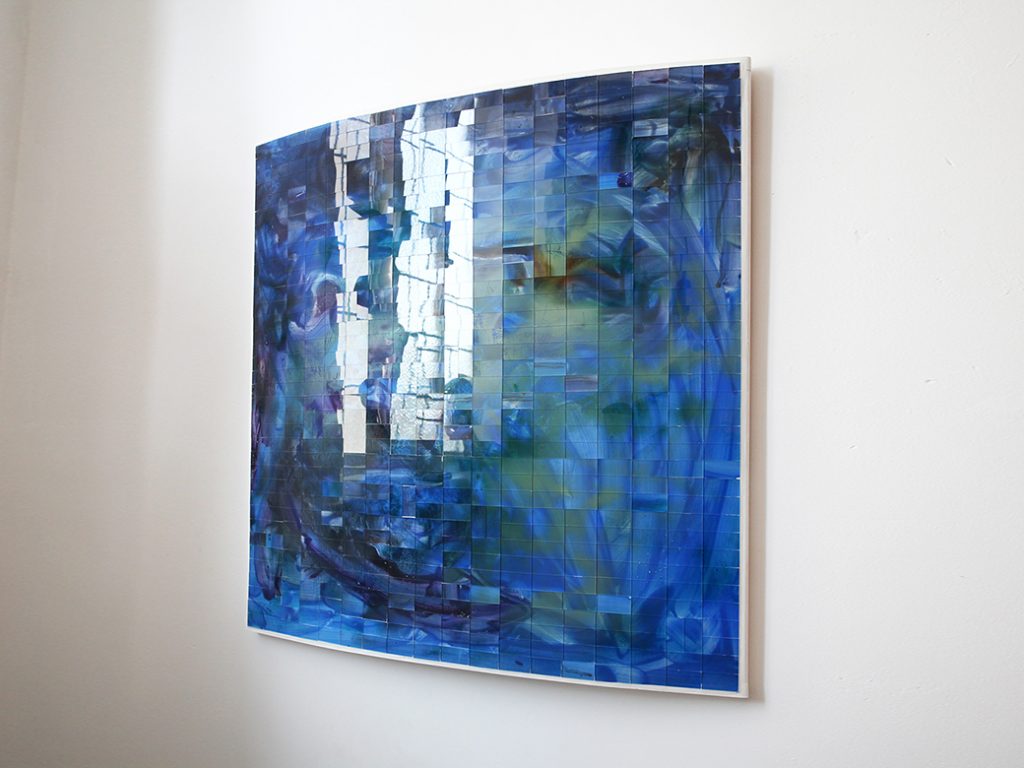
Hama-rikyu Gardens was once the site of a villa owned by a ruling family in the 17th century. It is now a public garden but still has a tea house and original timber structures that were used for shooting ducks for sport.
In Vermeer 28 Hama-rikyu, the tranquil, opaque blues and greens of the lake waters contrast with a carefully placed rock, a feature of traditional Japanese gardens. The gardens are extensive, with many lakes. They are now flanked on all sides by the tall modern buildings of the commercial district, which are reflected in the water. Looking at the lakes and reflections, it was possible to dream both that you were in the past and look at visions of the future, or in the present and time-travelling into the past.
Vermeer 29, Oceania Hama-rikyu; with this sense of the shifting of time in mind, I moved large sections of the glass and slid them across the image to take the place of other sections, so they replaced each other’s space. There are layers of colour, with fragments of text scratched into the surface to suggest dreams or memory. The square tiles also refer to the configurations of Japanese tatami mats which were floor coverings in tea houses like the one in the gardens. These mats are still referred to as a unit of measurement for contemporary Japanese rooms.
Dimensions each: 920 x 920x 100mm
Oceania: Vermeer 26-27 Awhitu
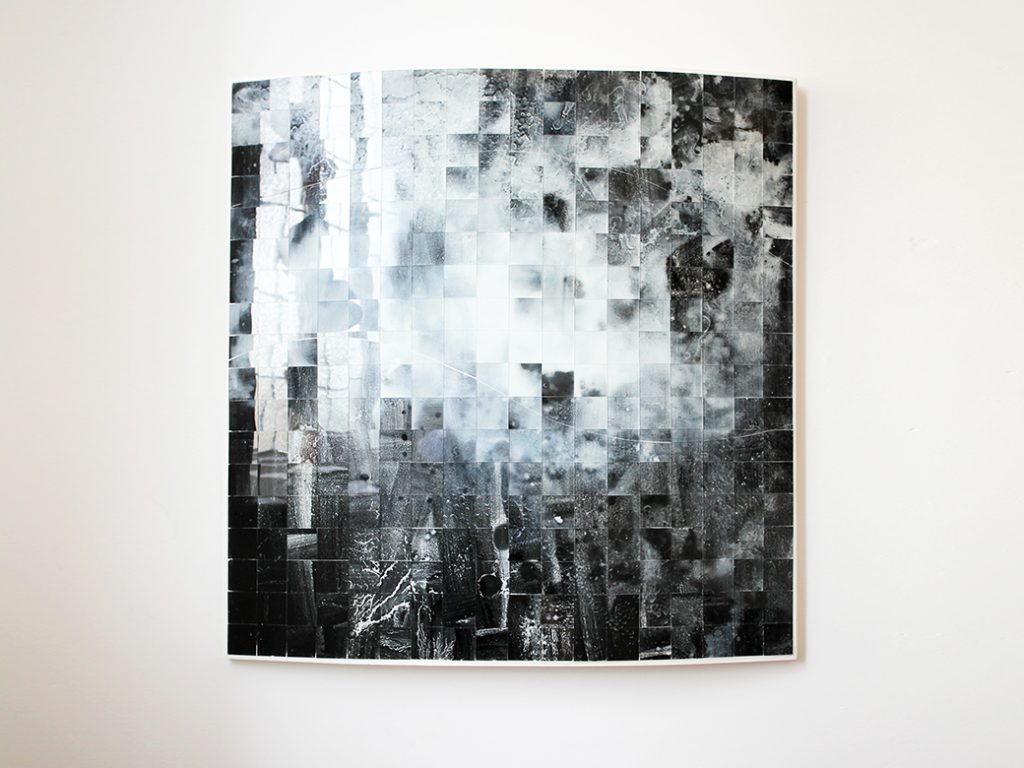
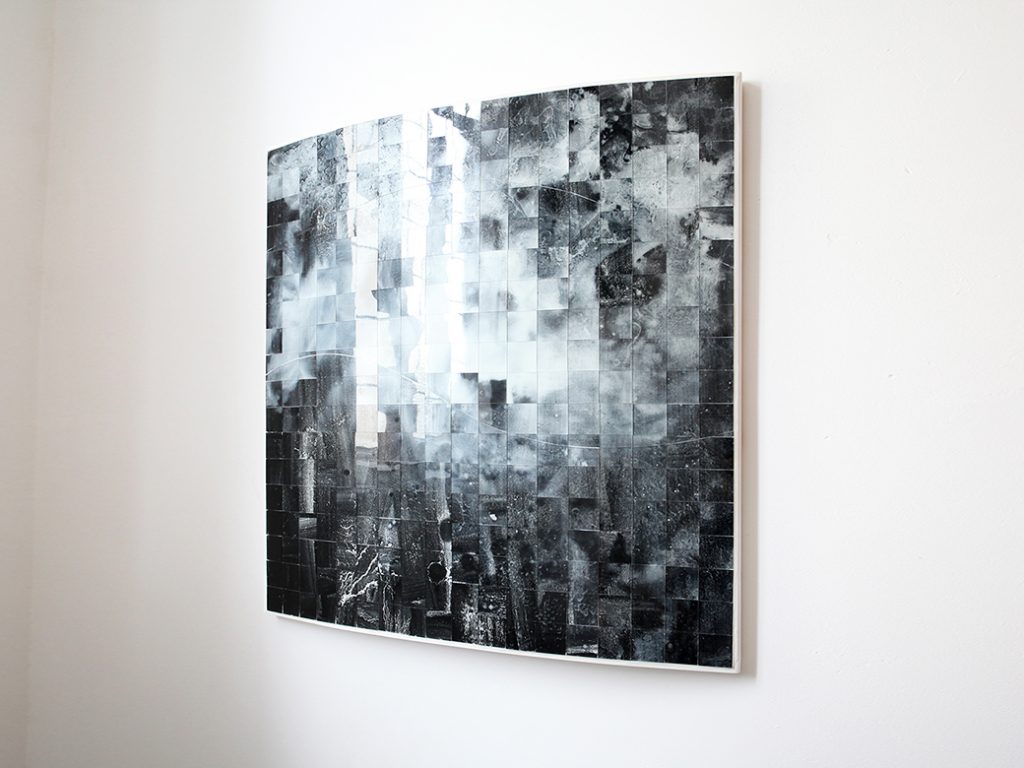
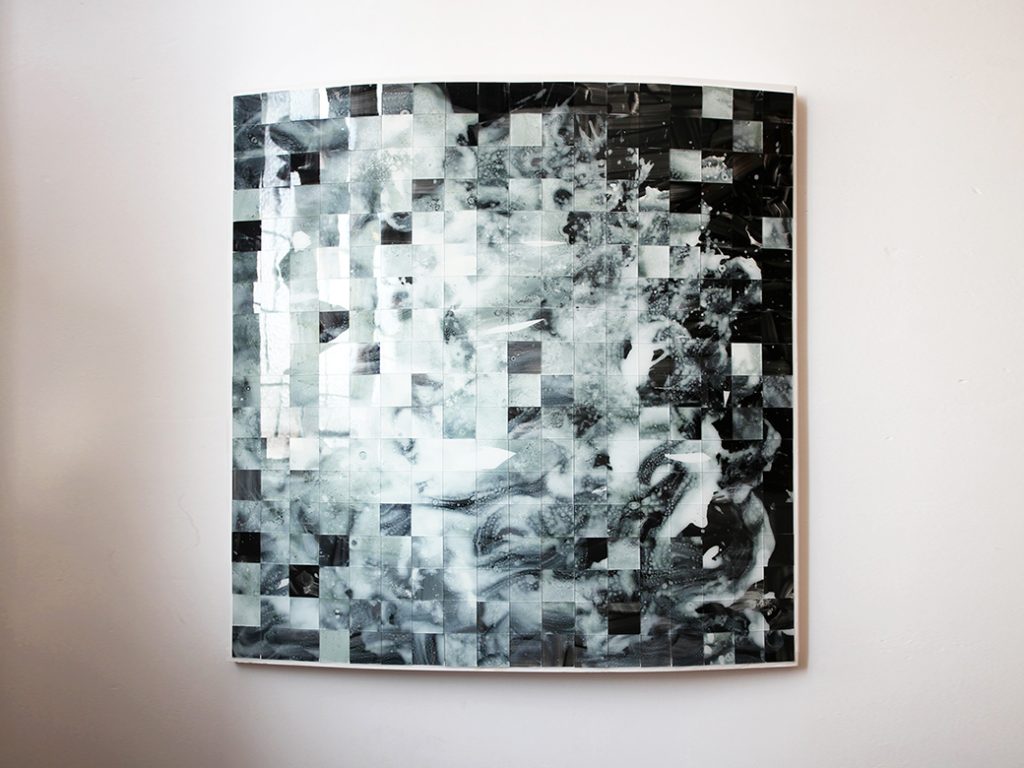
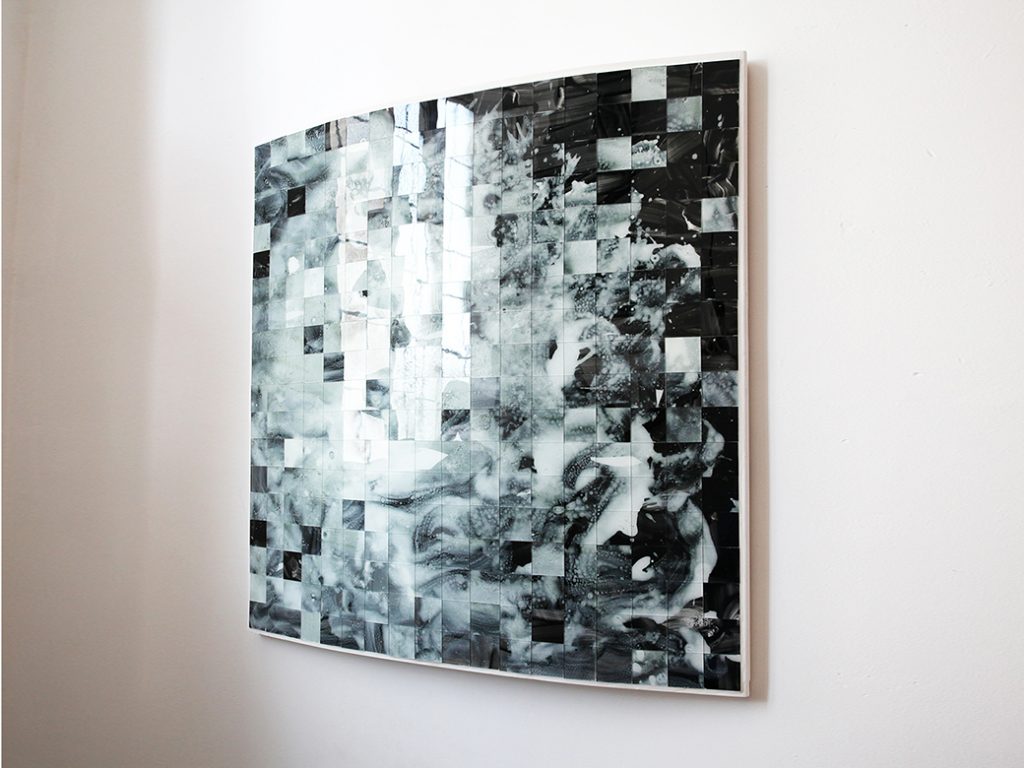
Awhitu beach is an expanse of sparkling black volcanic sand, fringed with dazzling white surf. The first of the two panels, Vermeer 26, shows the tide low, with more black sand exposed. Two curved waves are cut into simple square glass pieces.
In this second Awhitu panel, Vermeer 27, the black volcanic sand is less visible, having been engulfed by white water. The tide is in and the surf glitters and foams. Fixed in my mind is the memory of this powerful contrast of light and tone, and the energy of the ocean against the unspoiled, pristine shore.
Vermeer 24-25 Tiritiri
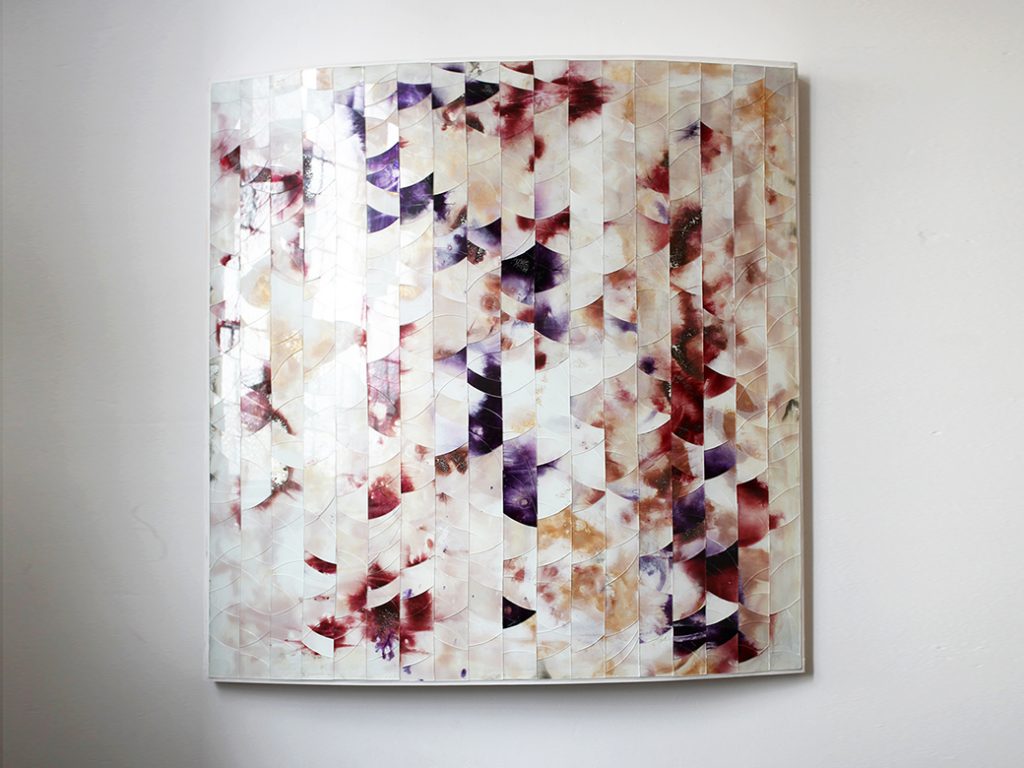
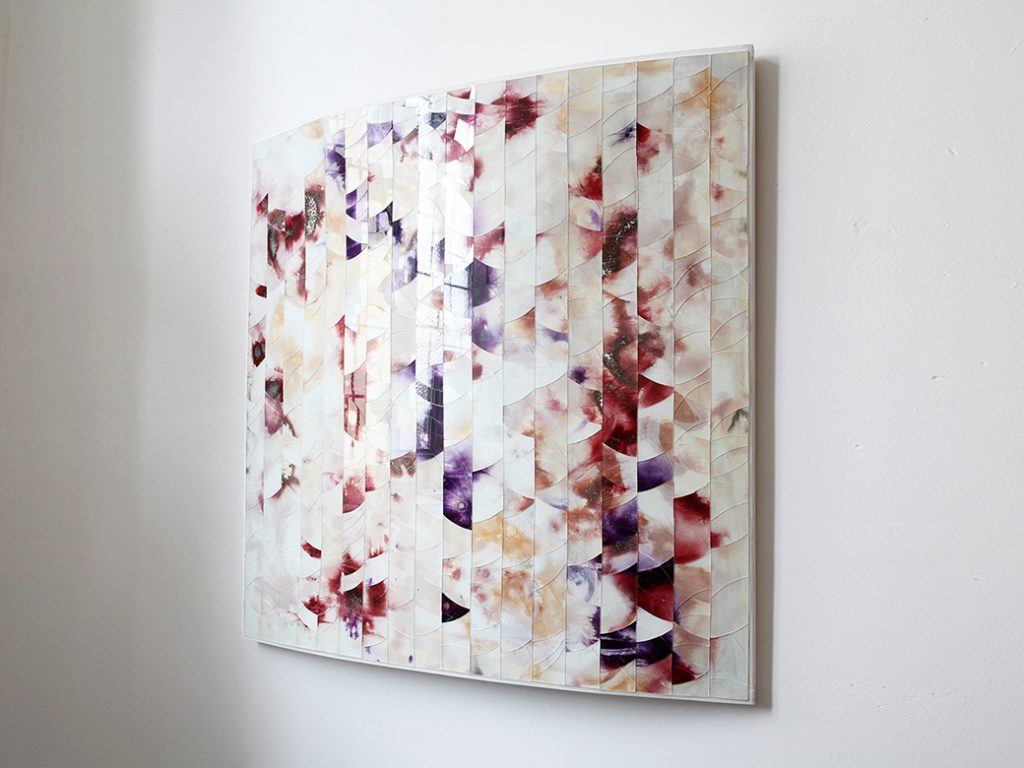
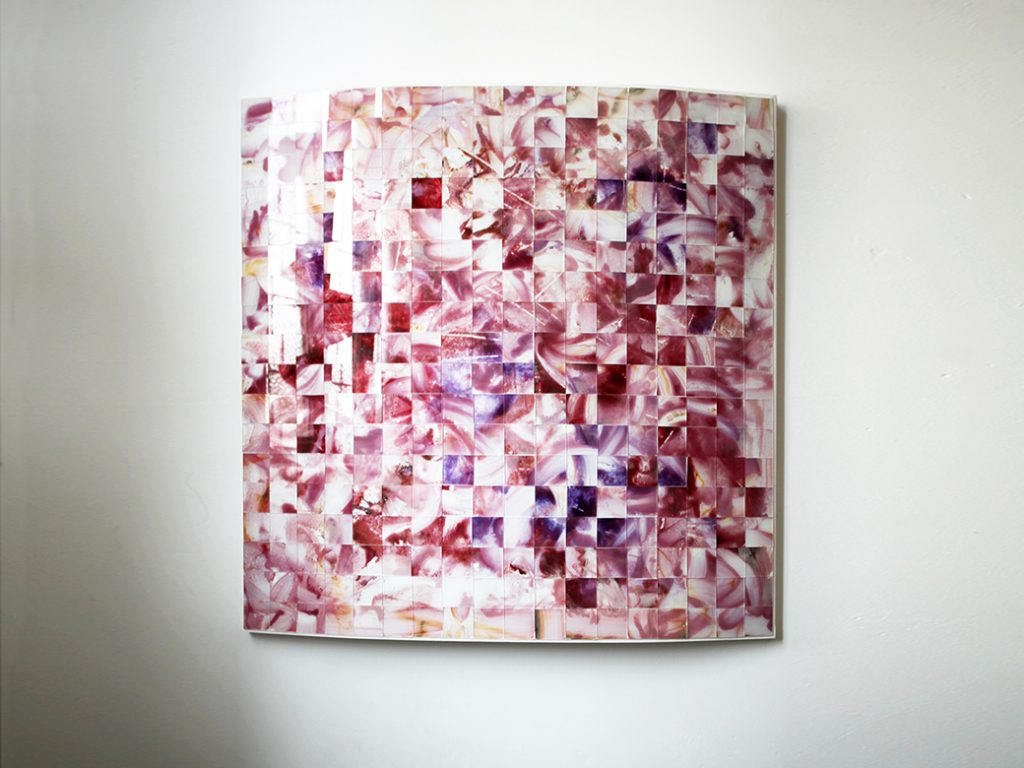
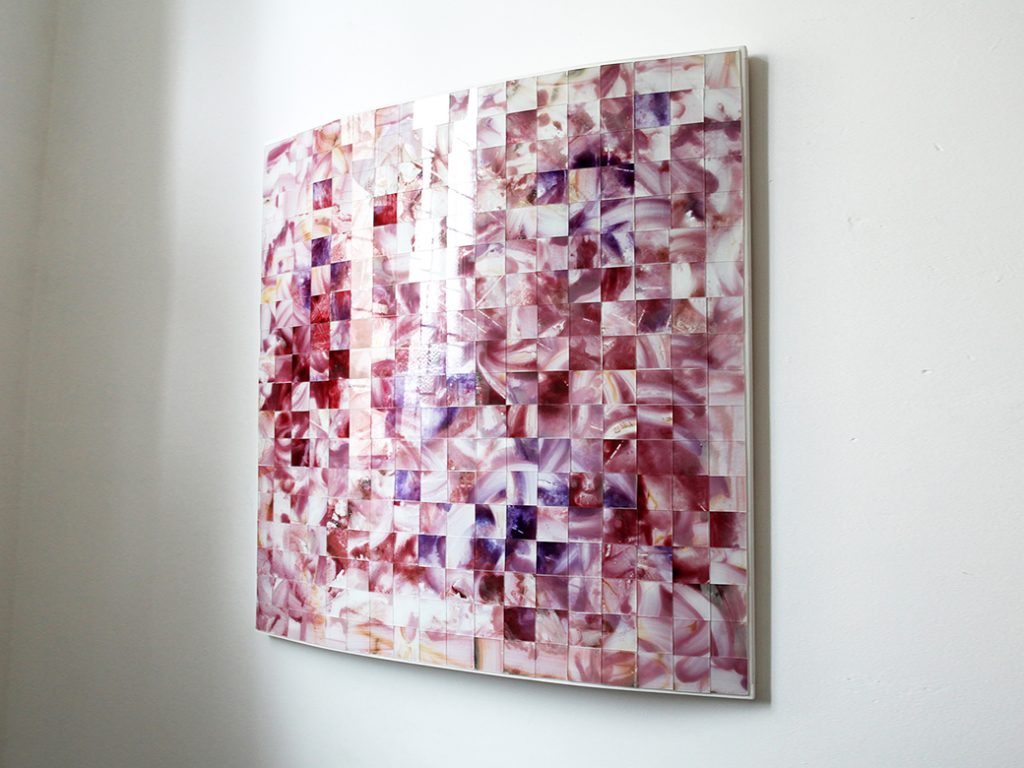
Tiritiri Matangi, an island near Auckland, is a wildlife sanctuary. The island has no rodents, so rare ground-nesting birds thrive here. The pink, white and yellow clamshells on some of the beaches are so numerous that the beach appears pink. Nearly all the shells are broken fragments, and the wave motion, which tumbles the many-sided and colourful fragments up and down the beach, constantly polishes the sharp corners. In ancient Pacific cultures, a shell is often represented by a triangle, which I have referenced in the three-sided tesserae of Vermeer 24. The curved and cut lines suggest the rolling motion of the shell fragments carried by waves along the shifting tideline.
Vermeer 25; in this work the painted image references the profusion of shell fragments. The tiles are cut into simple squares. Each square is a tiny study painted with enamels, mica, and luster to achieve layers and depth.
Vermeer 22-23 Manukau
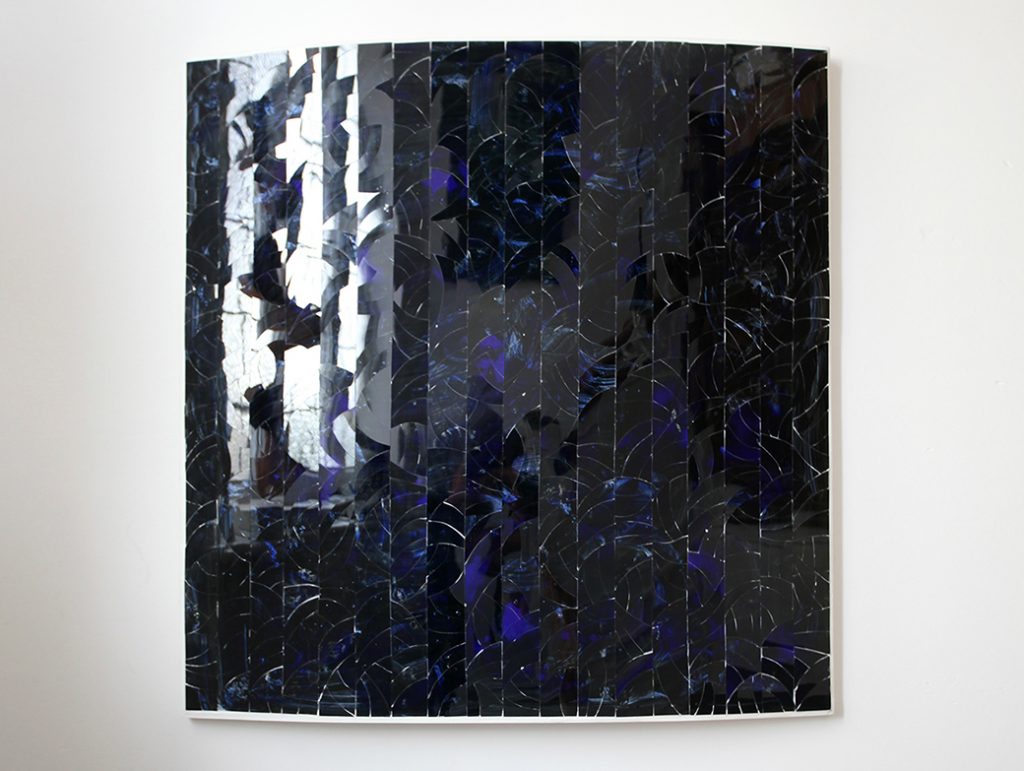
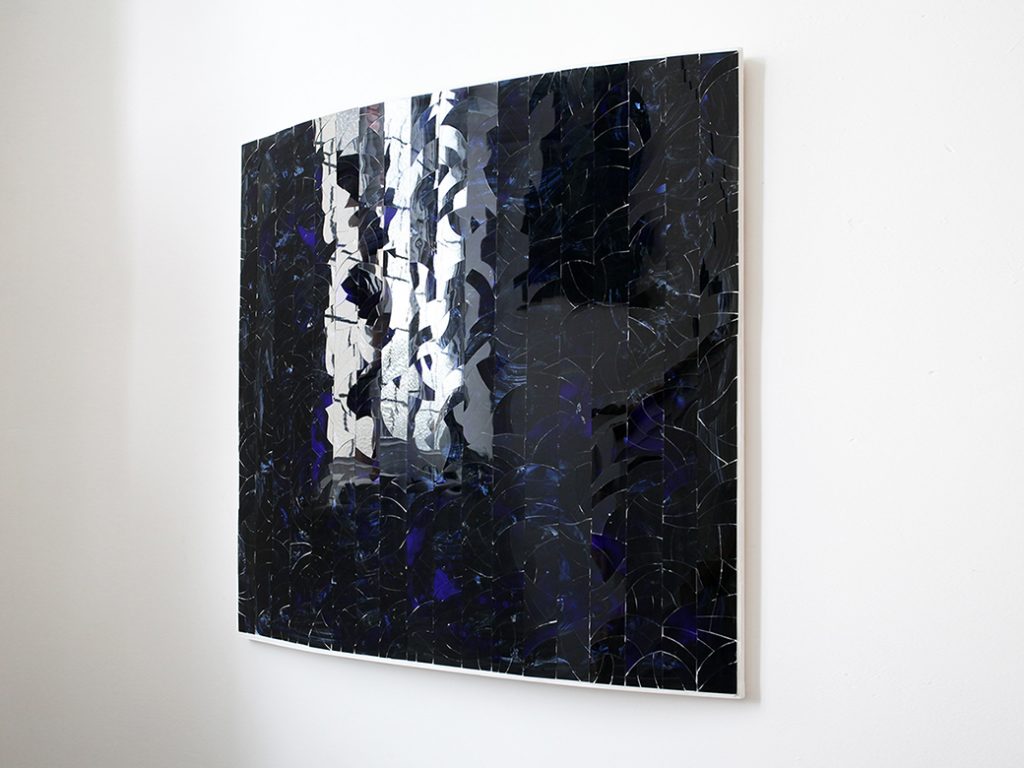


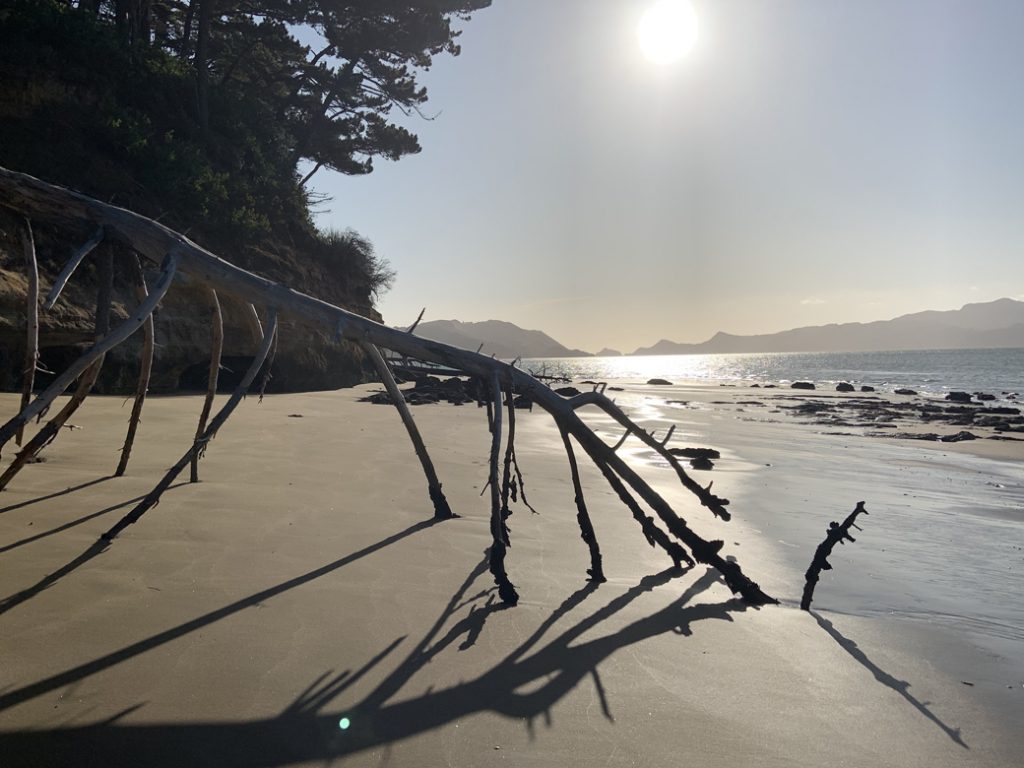
Vermeer 22, Manukau. A fallen tree had slipped from the grassy cliff onto the beach at Manukau Heads, near Auckland, New Zealand, just below the tideline, and had been claimed by the ocean. The timber was stripped of bark, bleached by the sun, and encrusted with small blue mussels. The dormant shellfish had colonised the bare wood, creating an inky black and iridescent textured mass. It looked as if it had become a single creature, particularly as the branches of the tree touched the sand and cast long shadows in the evening sunset. This living garment had razor-sharp peaks, glistening and fascinating, each shell protecting a creature. We were aware that this colony would transform once submerged.
The enamel colours are indigo and black, like the night and like the blue of the mussel shells. The intense colours suggest a fabulous mystical beast that transforms when underwater. The glass is cut to reference the surface of the ocean, which in time will return to cover the shells.
Mussels have an iridescent lustre and the glass surface of Vermeer 23 is cut in lines to echo how this nacre is formed, in layers and ridges. Light bounces from these tiny ridges, appearing to the eye as mother of pearl, or a spectrum of colour. This panel image represents a close-up view of the same mussel-encrusted tree. It considers how, when observed from a distance, the surface looks deceptively rounded – soft, even – but close up it is made of razor-sharp edges.
Related Posts
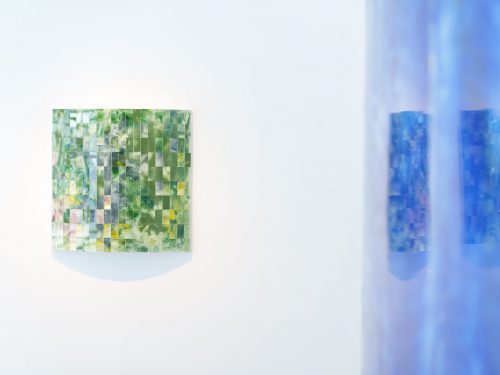
Artists talk transcript- Brook, Marsh, Moss
A solo show at The Vanner Gallery https://youtu.be/Q2SCq6OOCo8 3.5.24 - 8.6.24 Artists talk...
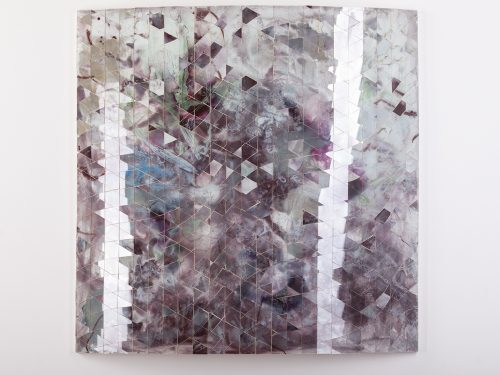
Brook, Marsh, Moss
A solo show at The Vanner Gallery 3.5.24 - 8.6.24 Brook, Marsh, Moss considers the places where...

